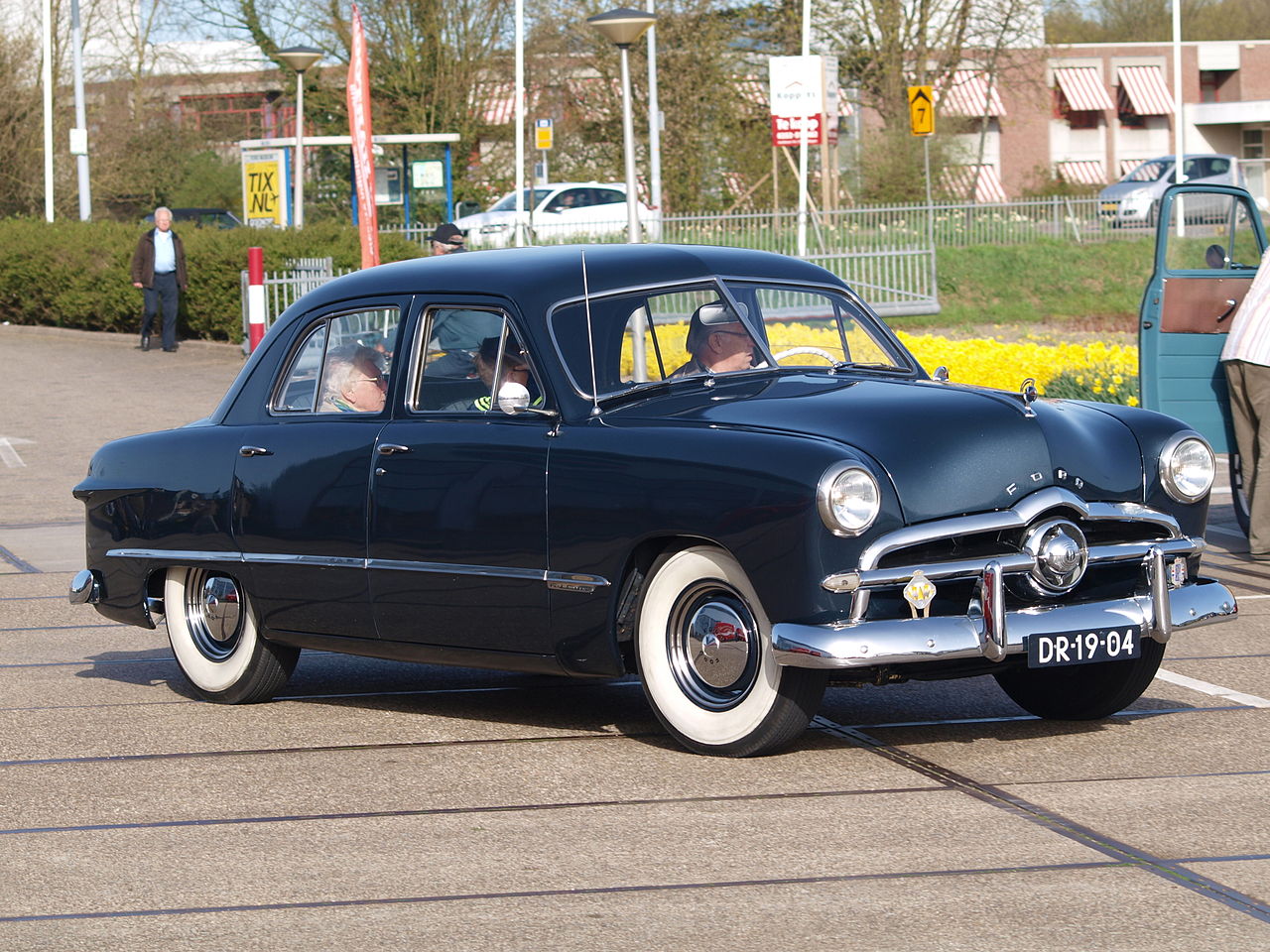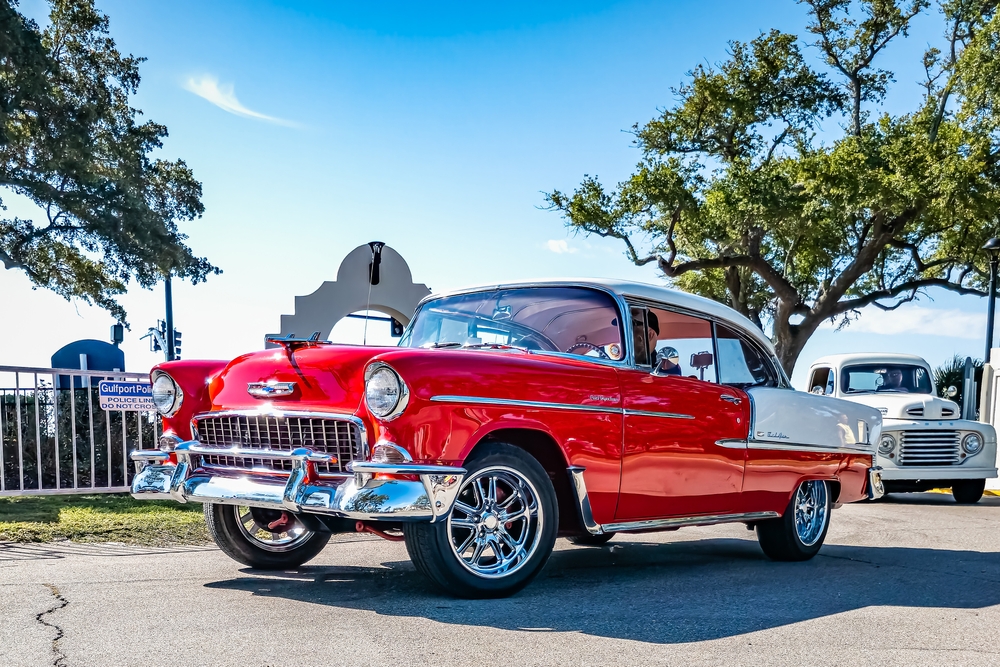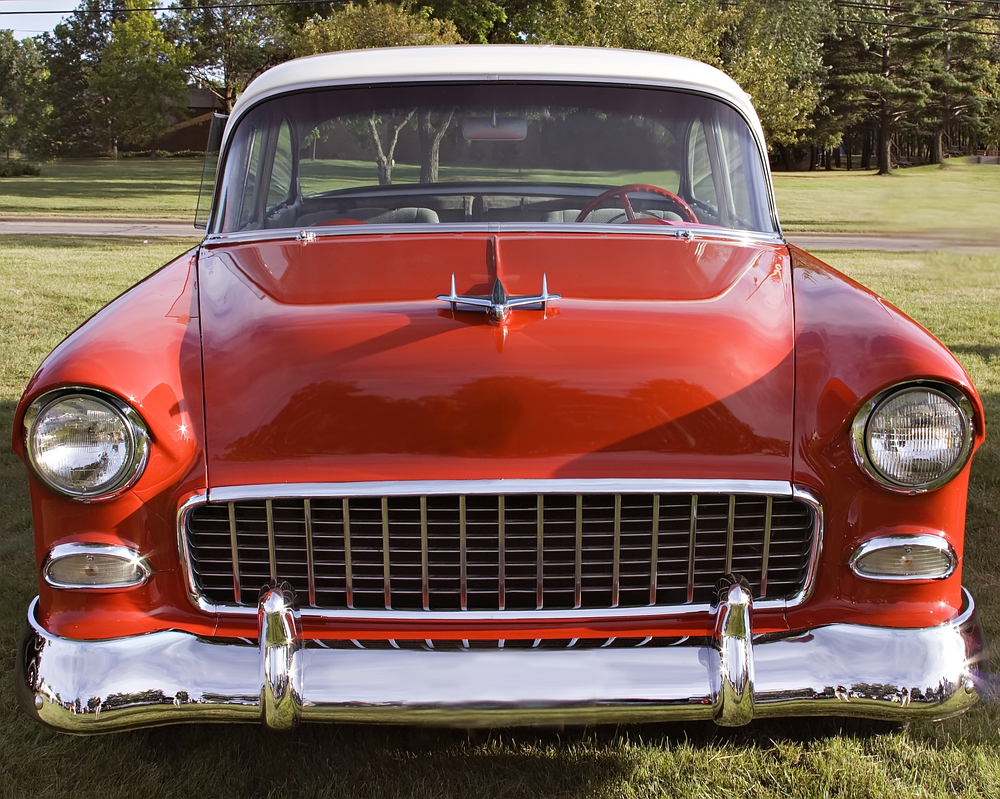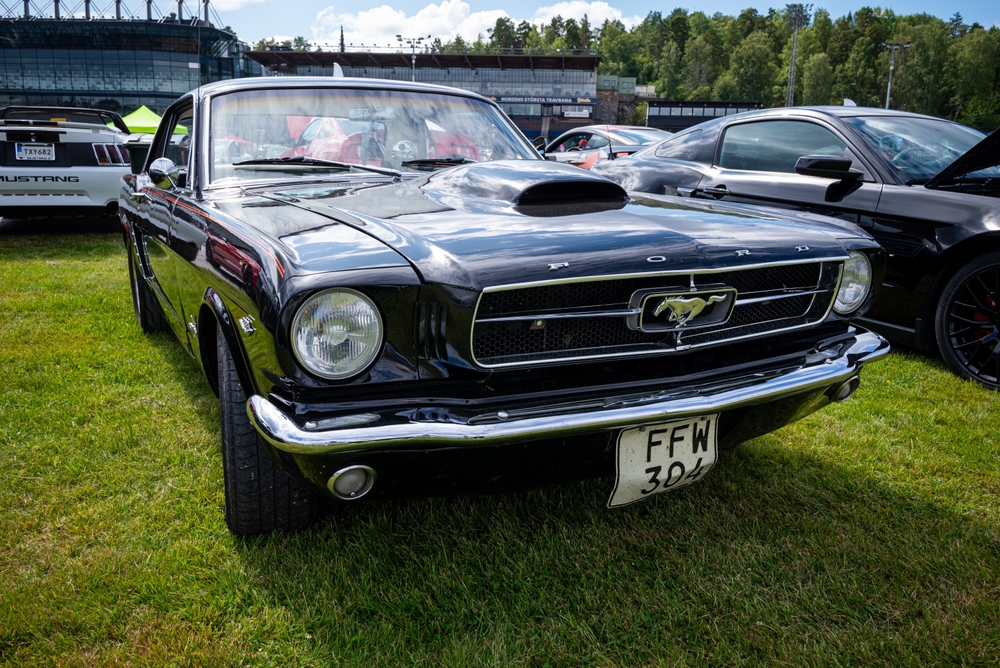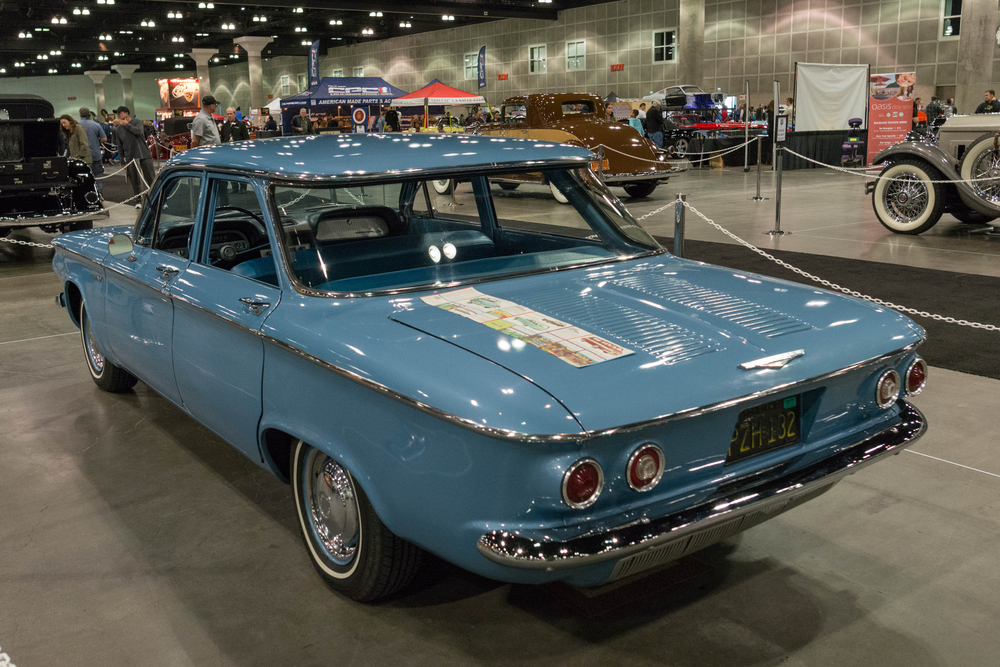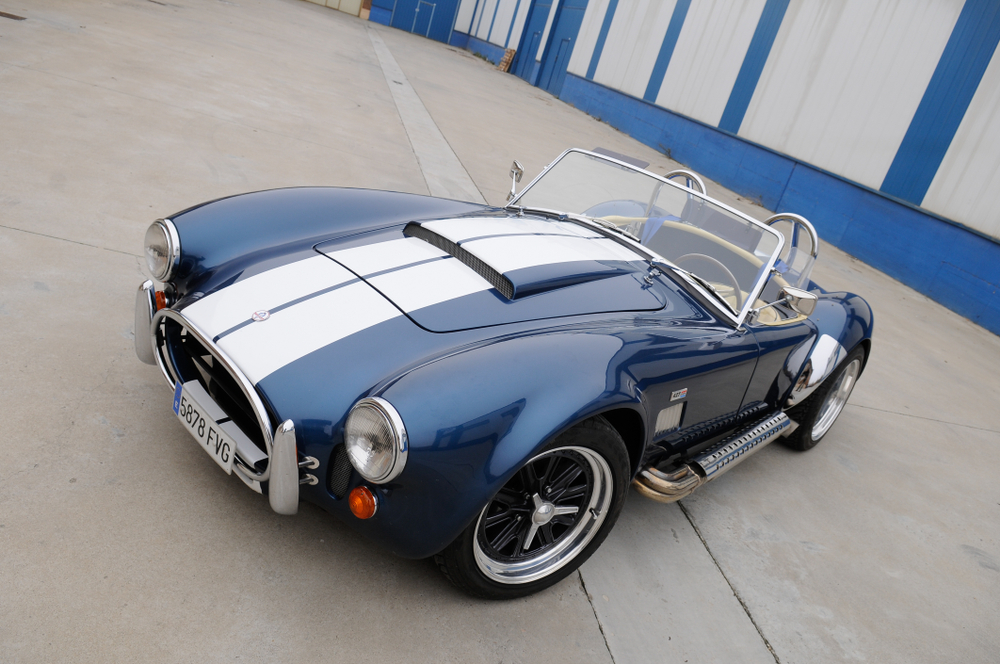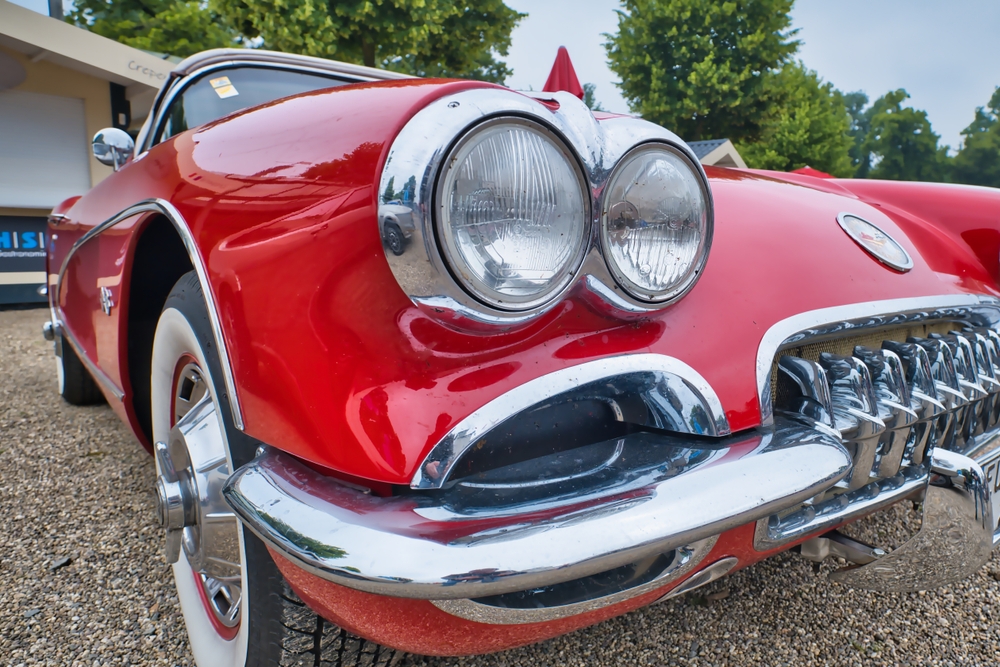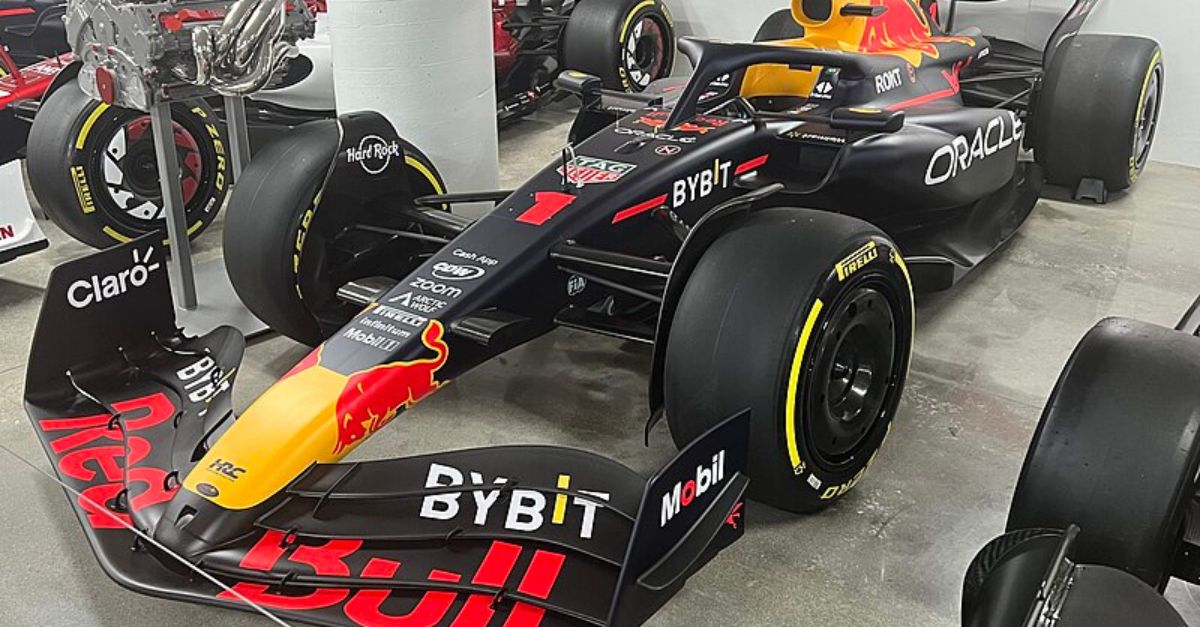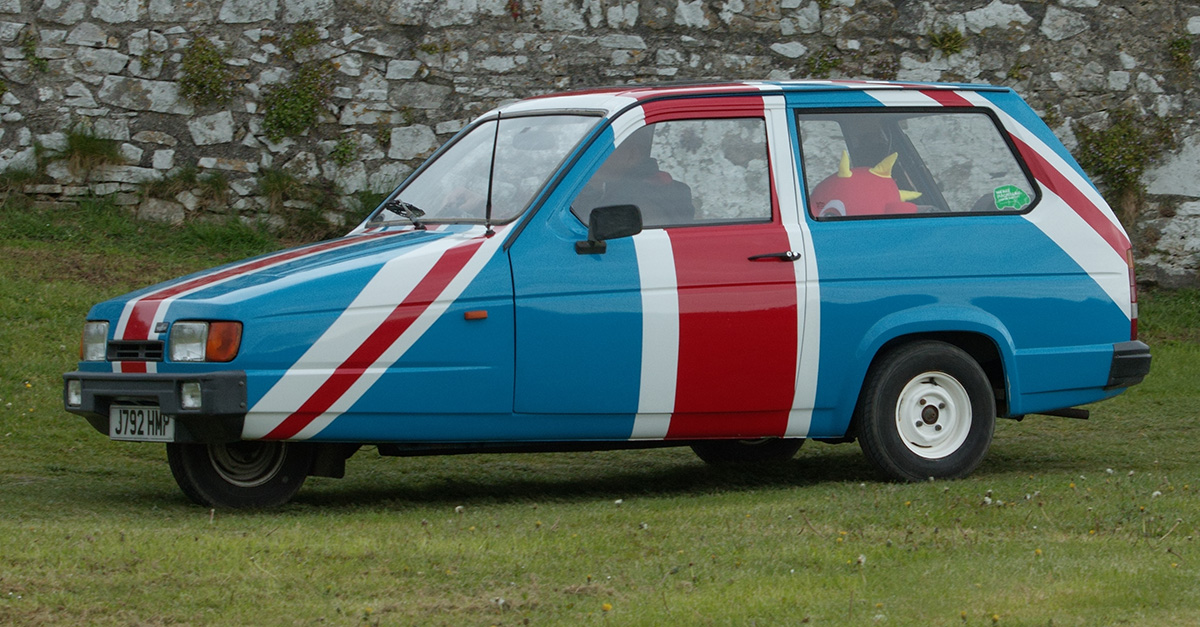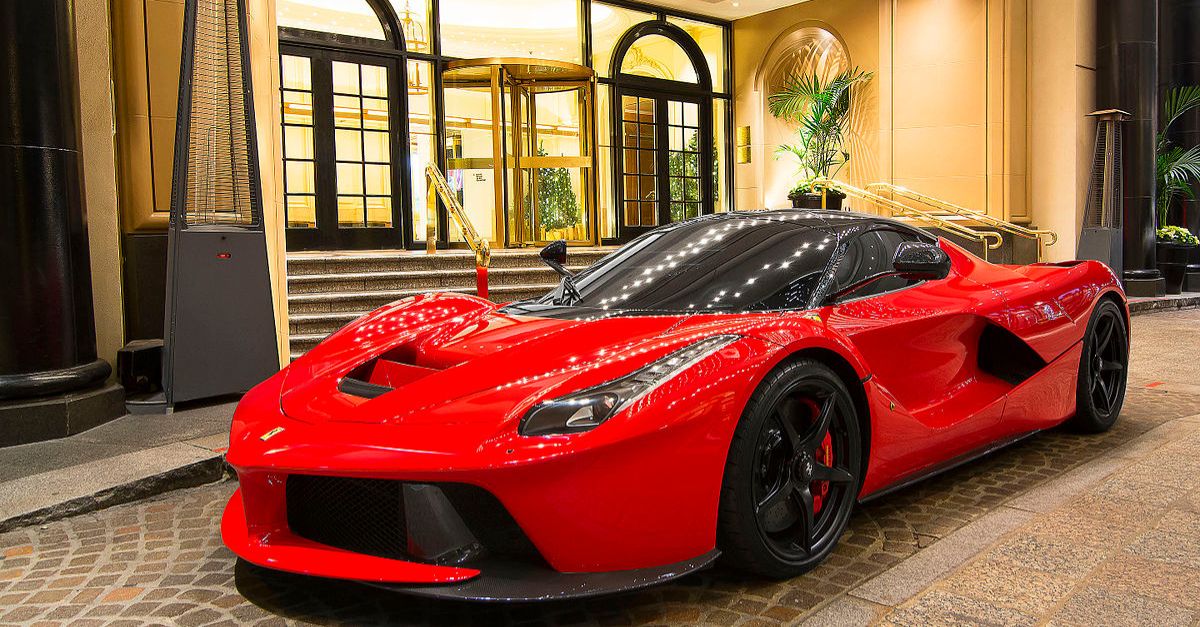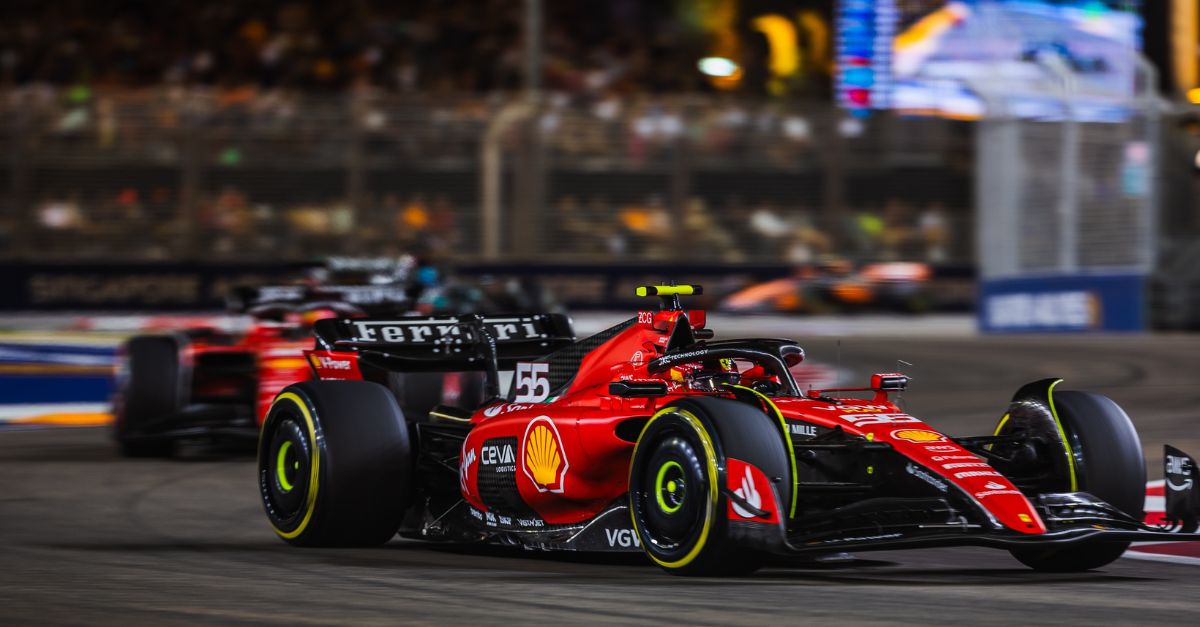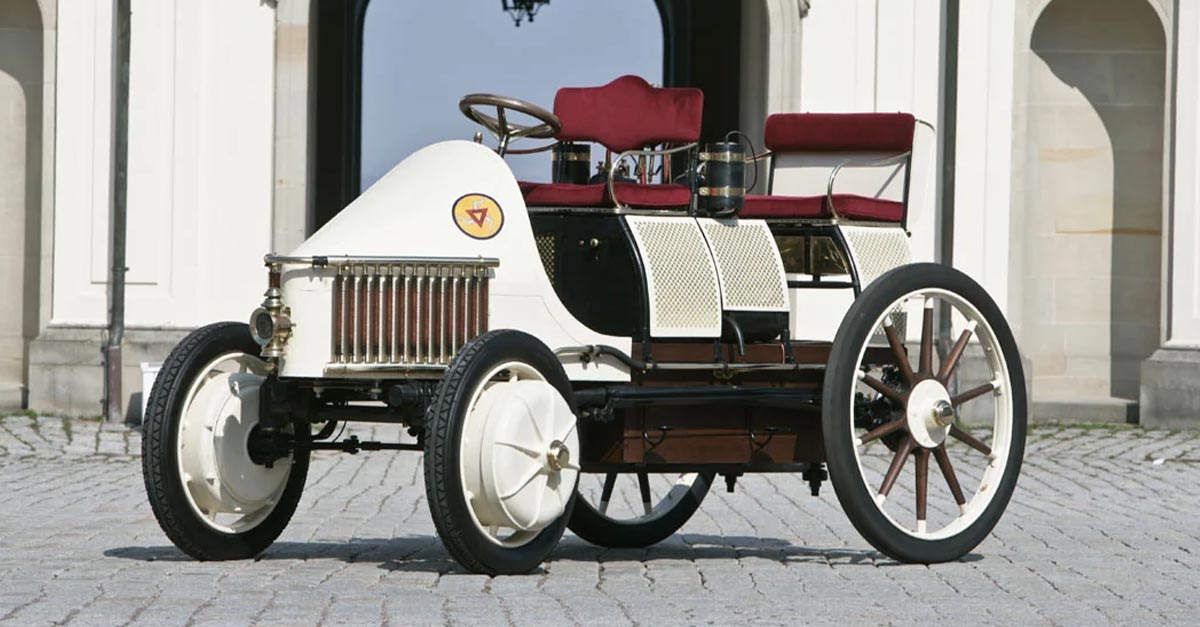Driving Us Forward
The history of cars chronicles our visions of freedom and personal identity. Here, we celebrate the triumphs even as we note the failures that pointed us in other directions. After all, the road to progress is lined with shiny billboards touting great innovation, along with pothole-laden detours.
Oldsmobile Model R (1901 To 1904)
Americans were used to the horse and buggy, so Ransom Eli Olds made it easy for drivers to make the transition. The Model R looked like a buggy and came complete with tiller steering to direct its seven horsepower down the country’s rustic, and usually rough, dirt roads.
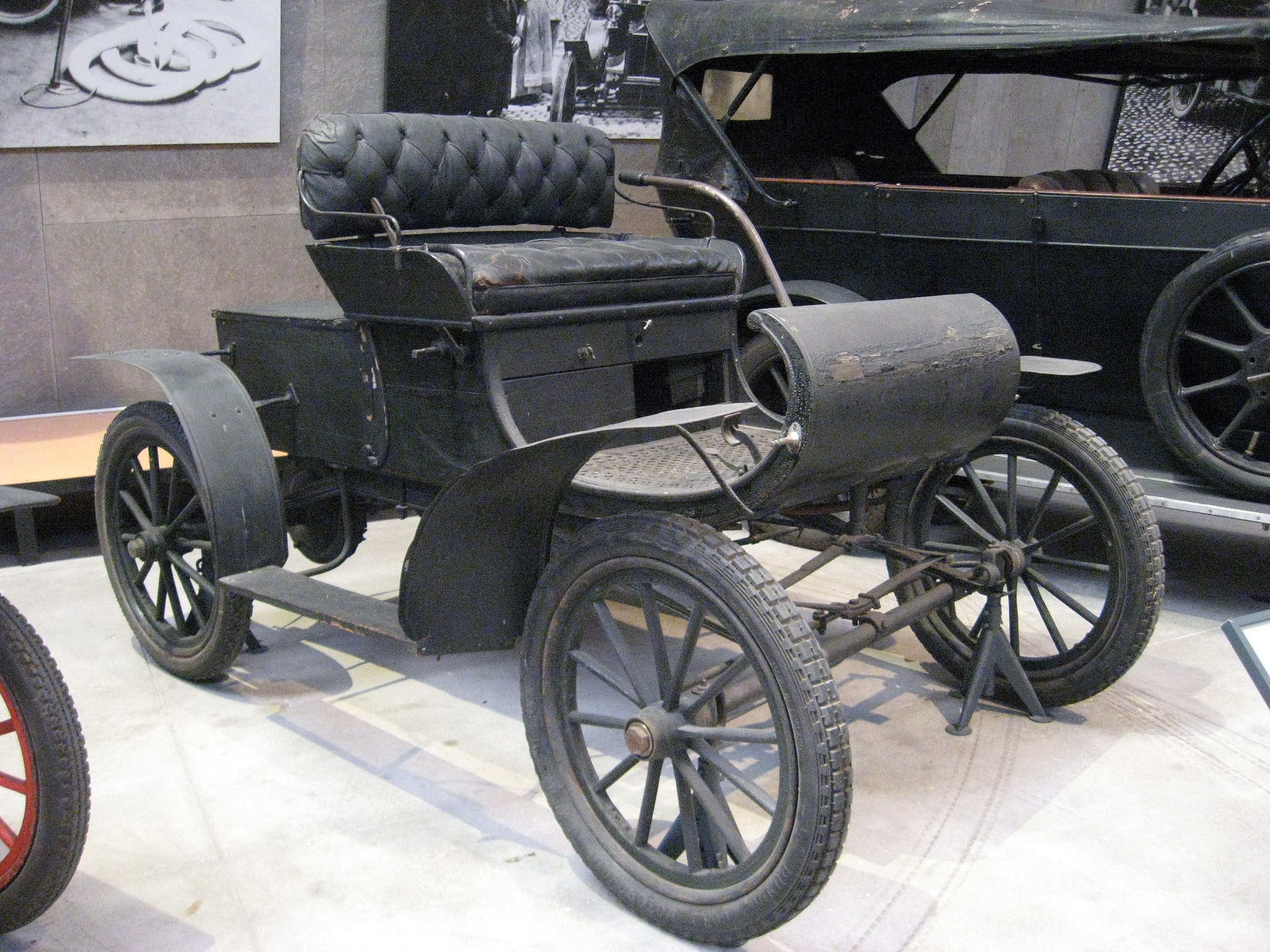 Liftarn, CC BY-SA 3.0, Wikimedia Commons
Liftarn, CC BY-SA 3.0, Wikimedia Commons
Oldsmobile Model R (1901 To 1904)
Olds’ Detroit factory went up in flames in 1901, along with three of his four prototypes. The Model R survived, and Olds built over 400 by year’s end. The popular one-cylinder car even inspired a song, “In My Merry Oldsmobile,” where a singer woos a gal with his hot new ride.
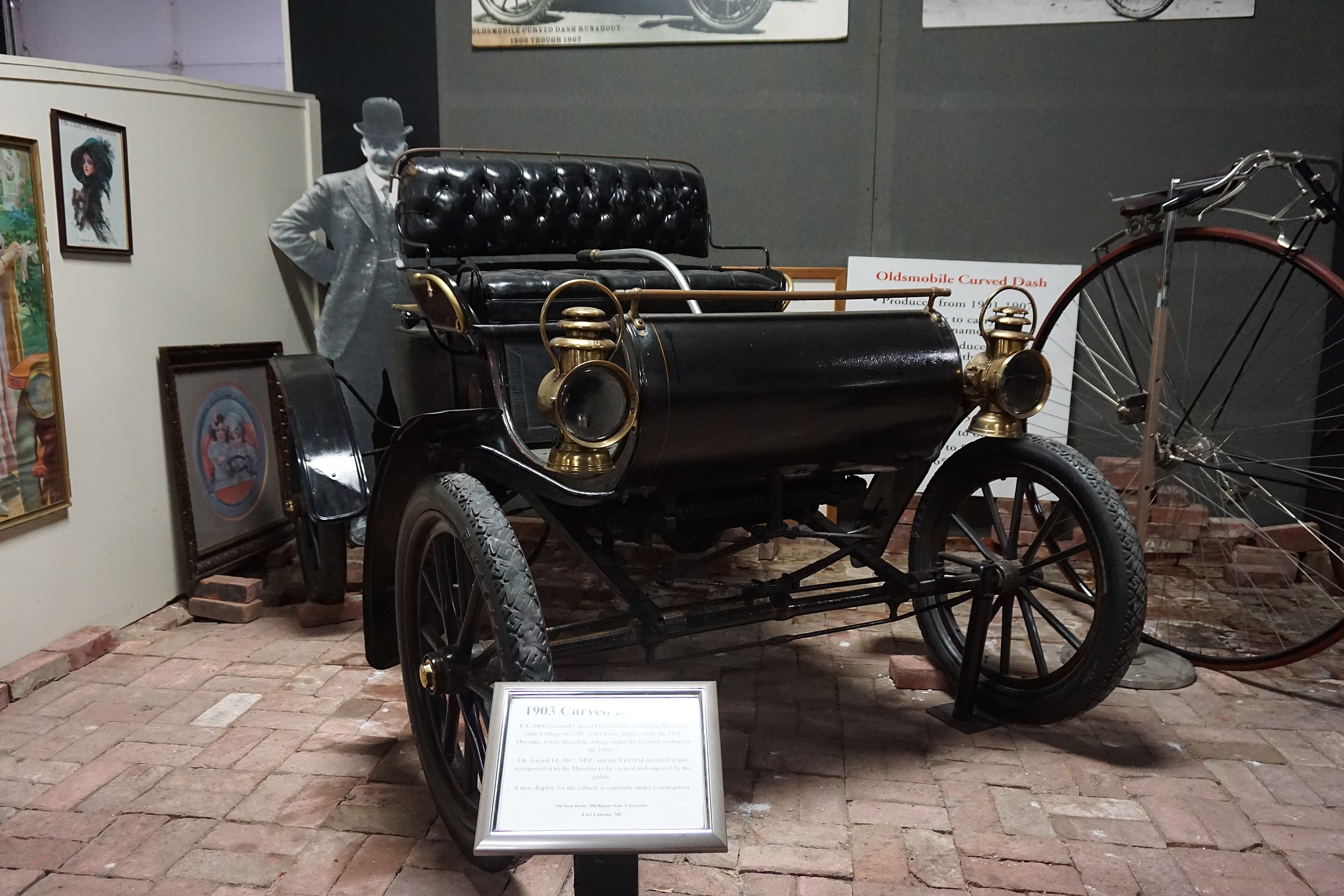 Michael Barera, Wikimedia Commons
Michael Barera, Wikimedia Commons
Buick Model 10 (1908 To 1910)
Billy Durant wanted to make General Motors big—and to do so fast. He bought up most of his competitors within GM’s first year, though Henry Ford said no. Buick, on the other hand, did sell itself, and its all-white Model 10 helped drive GM’s early success, with around 23,000 made.
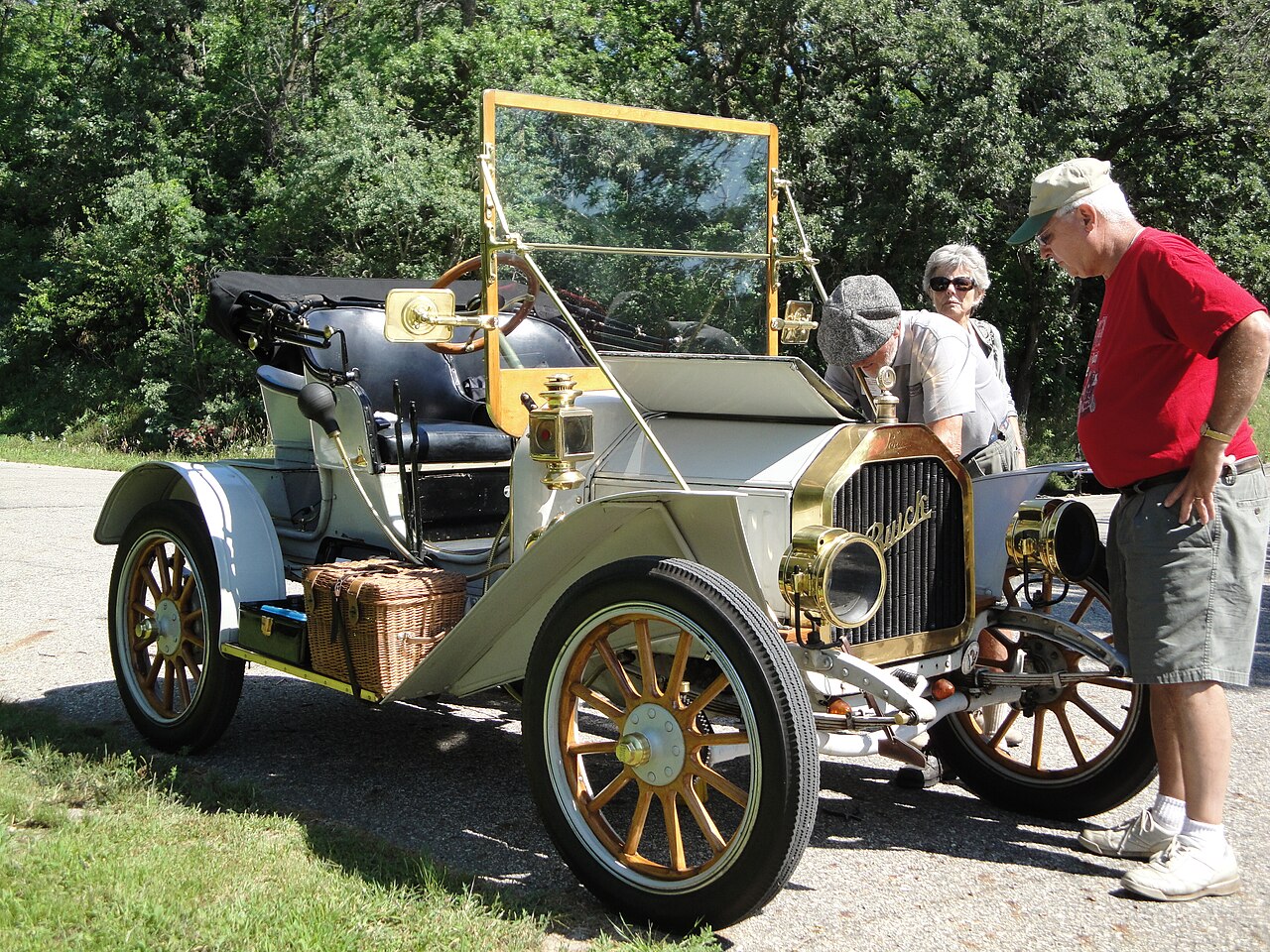 Greg Gjerdingen, CC BY 2.0, Wikimedia Commons
Greg Gjerdingen, CC BY 2.0, Wikimedia Commons
Buick Model 10 (1908 To 1910)
The four-cylinder motor featured Buick’s “valve-in-head” approach to engines, and the Model 10’s performance was impressive for the time. But Buick eventually realized its key to success would be to do some upmarket branding, and let Ford’s new Model T please the masses.
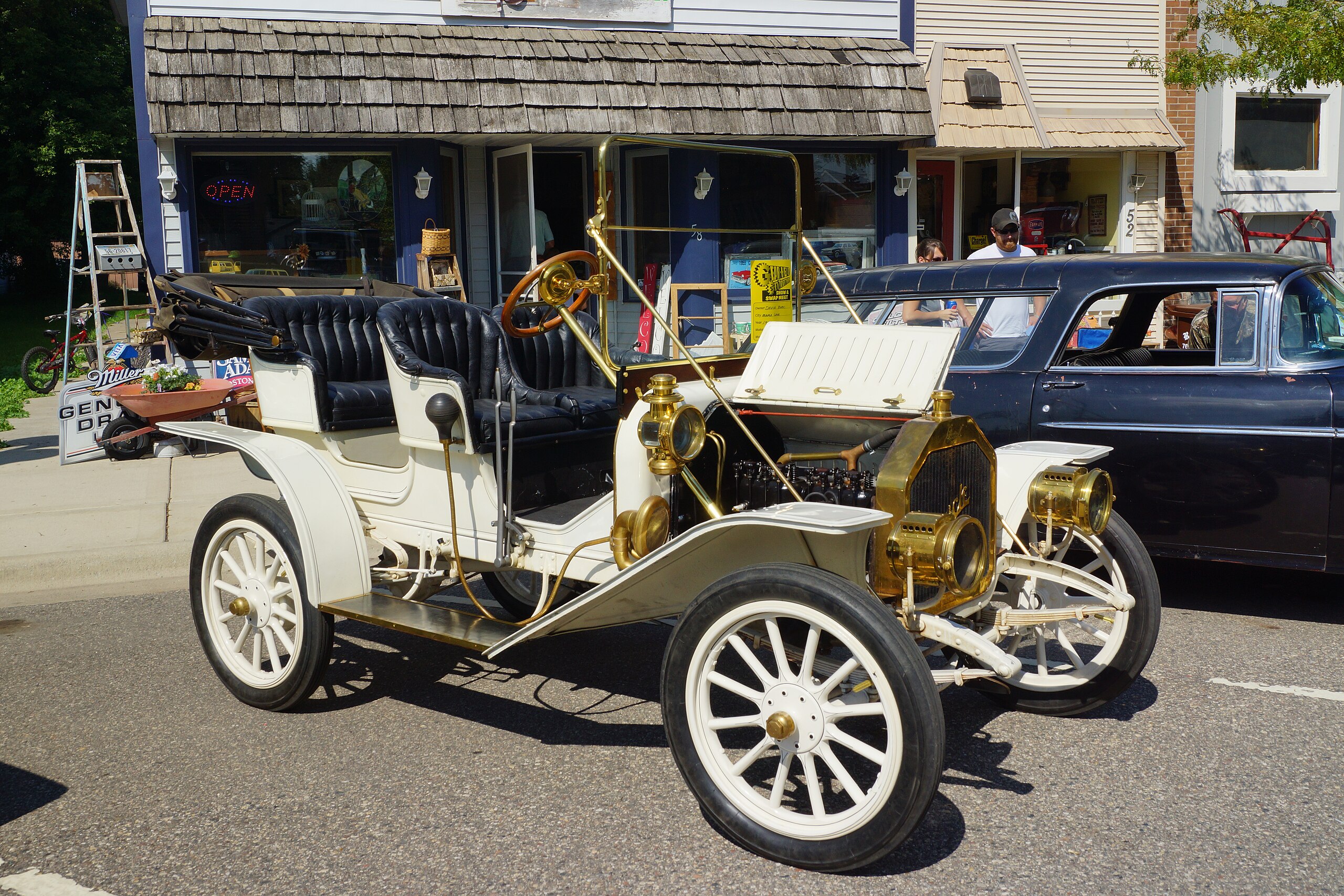 Greg Gjerdingen, CC BY 2.0, Wikimedia Commons
Greg Gjerdingen, CC BY 2.0, Wikimedia Commons
Ford Model T (1908 To 1927)
Henry Ford utterly dominated the car market for years with a relatively cheap vehicle that offered 20 horsepower producing breakneck speeds of up to 45 mph (72 km/h). Determined to promote efficiency, he early on decided to drop color options, so your only choice was black.
 Mariordo, CC BY-SA 3.0, Wikimedia Commons
Mariordo, CC BY-SA 3.0, Wikimedia Commons
Ford Model T (1908 To 1927)
Ford’s efficiency flooded the car market, but eventually faced a road bump. His innovative assembly lines were getting bogged down by bored and unhappy workers. So he more than doubled wages—to five bucks an hour—and cut the workday from nine hours to eight. But while the Model T went down in history as perhaps the most iconic American car, its shining legacy hid a dark truth—we'll get into the nitty gritty of that later in the article.
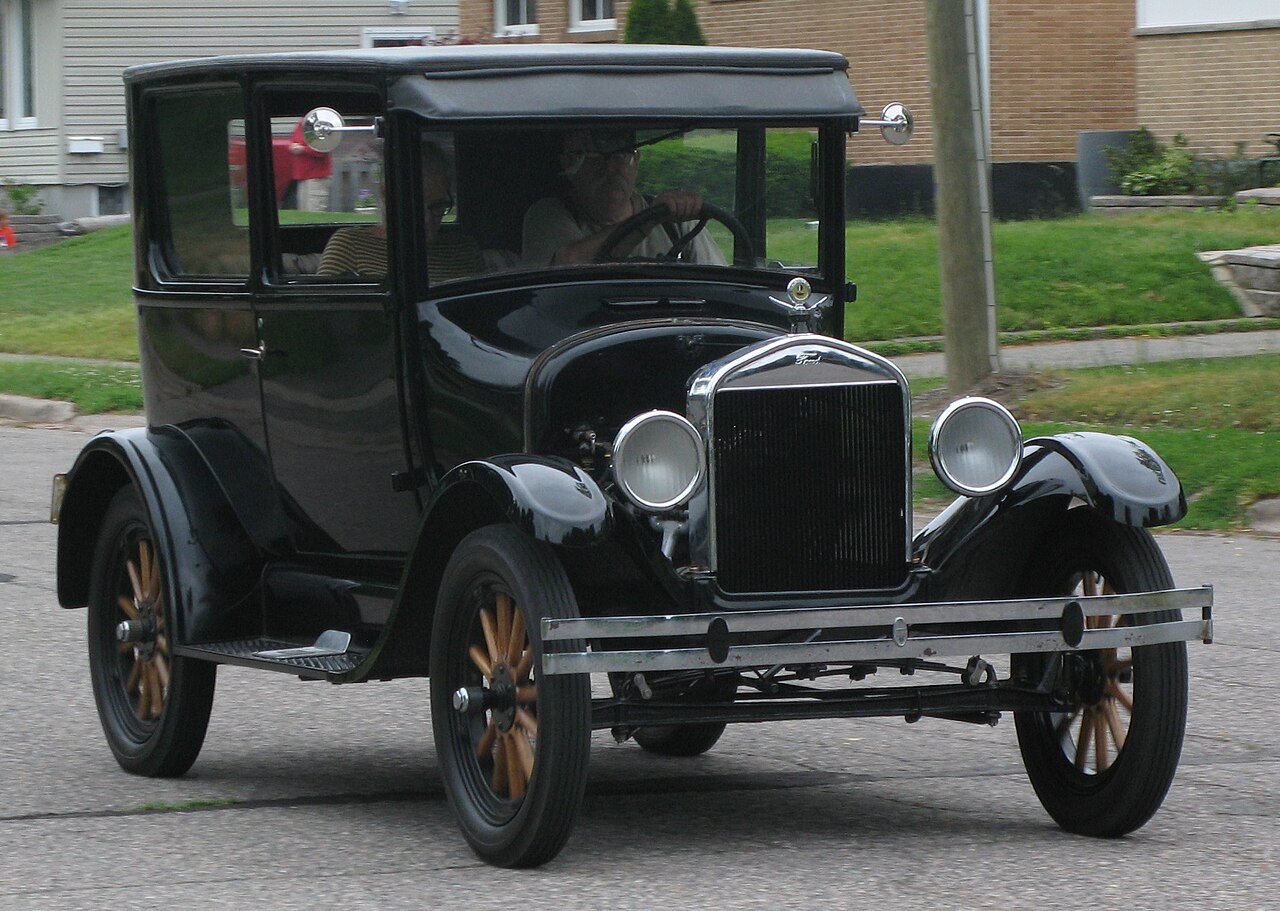 SsmIntrigue, CC BY-SA 4.0, Wikimedia Commons
SsmIntrigue, CC BY-SA 4.0, Wikimedia Commons
Dodge Brothers Model 30 (1914 To 1921)
Henry Ford was so impressed by John and Horace Dodge that he offered 10% of his budding company in exchange for their auto parts. But when the brothers came up with the revolutionary Model 30, featuring 35 hp vs the Model T’s 20 hp, and much simpler pedals, Ford got scared.
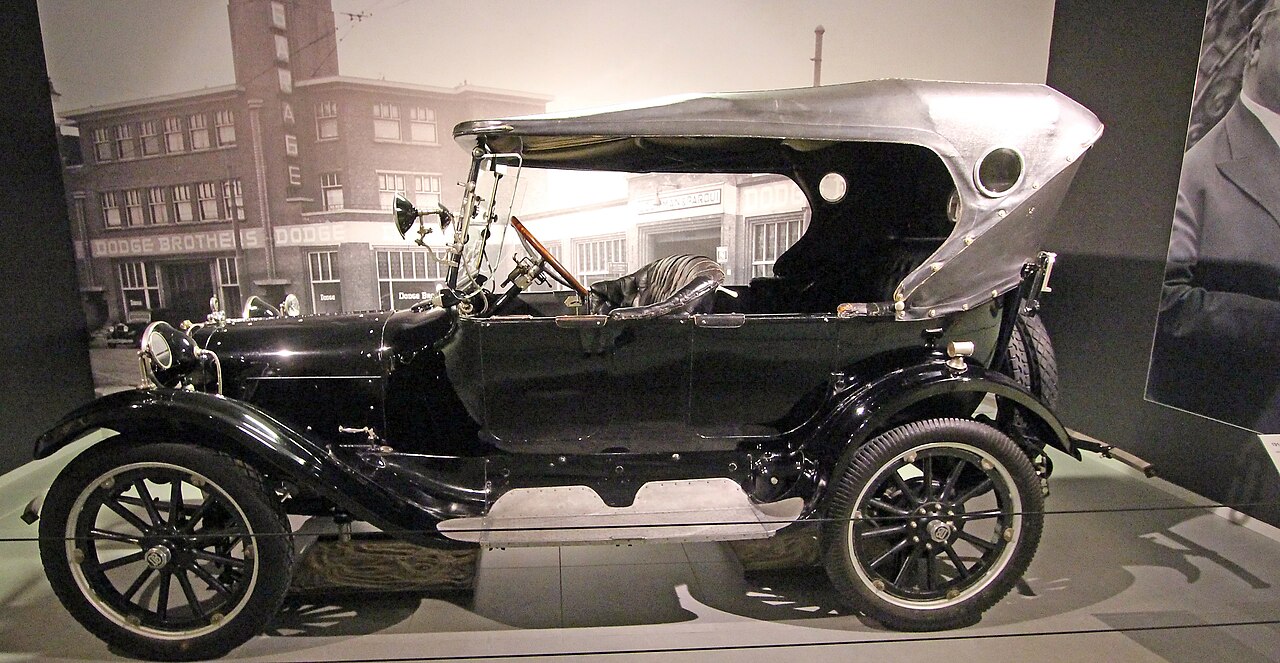 bertknot, CC BY-SA 2.0, Wikimedia Commons
bertknot, CC BY-SA 2.0, Wikimedia Commons
Dodge Brothers Model 30 (1914 To 1921)
He stopped paying Ford shareholders an annual dividend, supposedly to build another factory, but likely also to deprive the Dodge brothers of cash that would boost their own production. A lawsuit followed, and Ford had to buy back the stock. Sadly, the brothers died soon after.
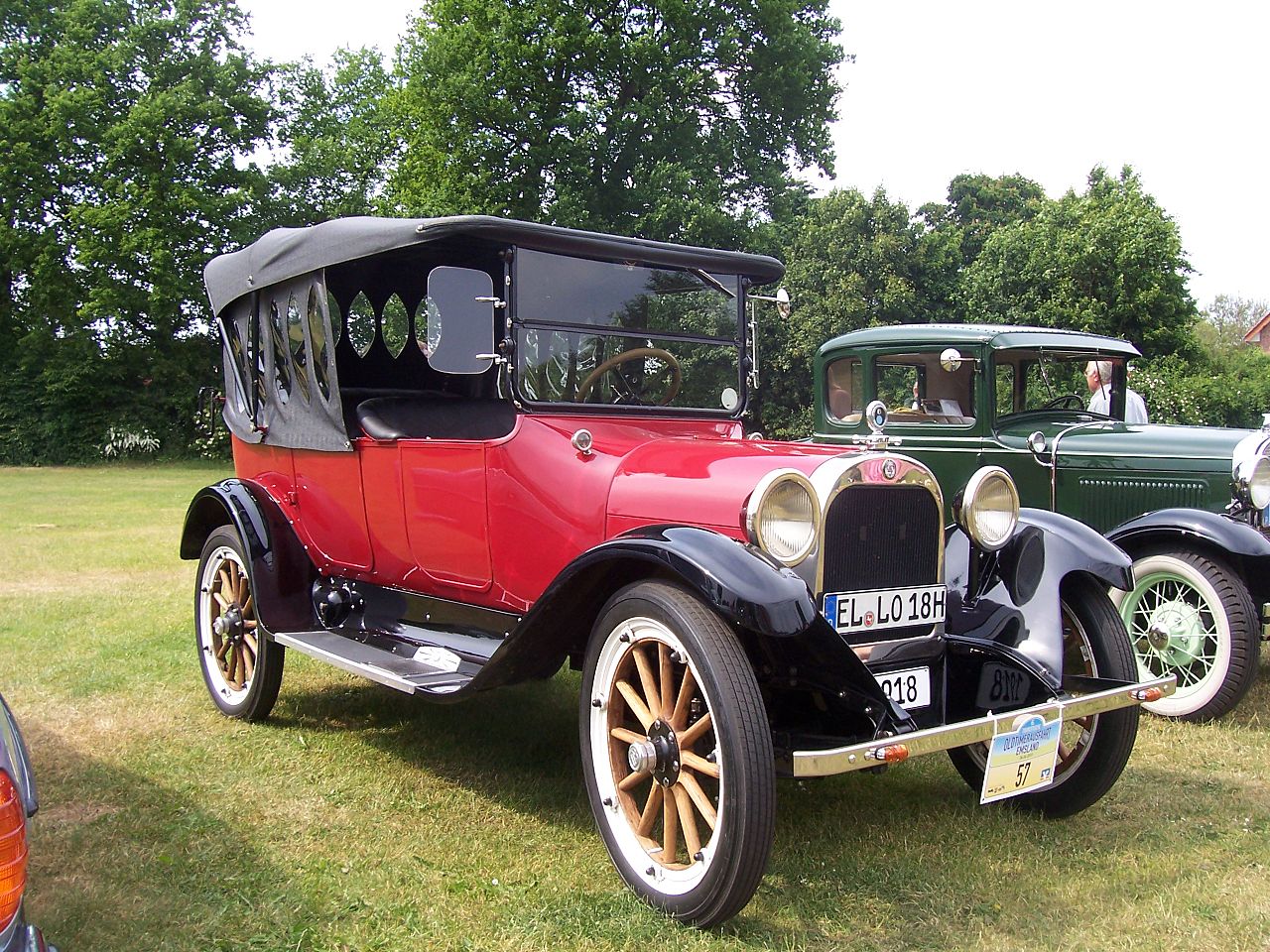 Martin V., CC BY-SA 3.0, Wikimedia Commons
Martin V., CC BY-SA 3.0, Wikimedia Commons
Ford Model A (1927 To 1931)
Ford realized the Model T needed replacing, and came up with the Model A, thanks in part to design work by his son Edsel—a name made infamous decades later. In a quick retooling, the last Model T was built in May 1927, and the first Model A rolled off the assembly line in October.
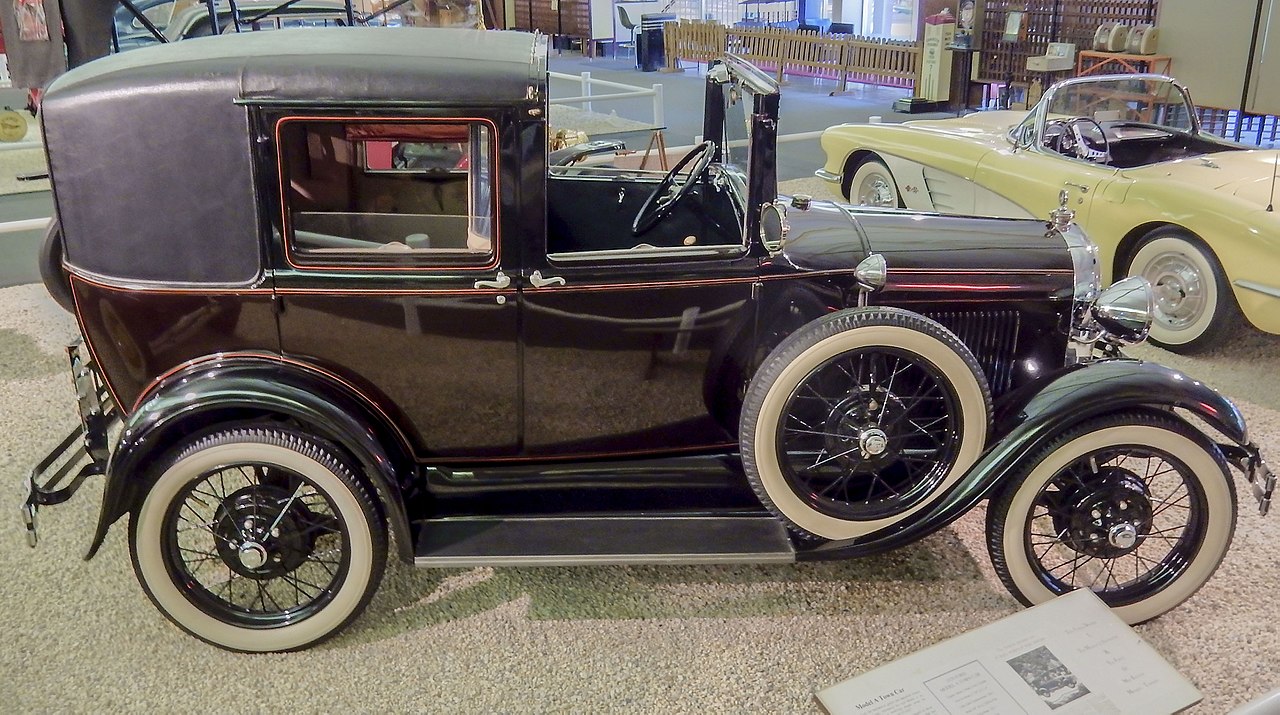 Aaron Headly, CC BY-SA 4.0, Wikimedia Commons
Aaron Headly, CC BY-SA 4.0, Wikimedia Commons
Ford Model A (1927 To 1931)
Although still aimed at a mass market, the Model A included four-wheel hydraulic-lever shock absorbers, four-wheel brakes, and a safety-glass windshield. Edsel designed some crowned fenders. 2 million Model A cars were produced by July 1929, but production ended in 1931.
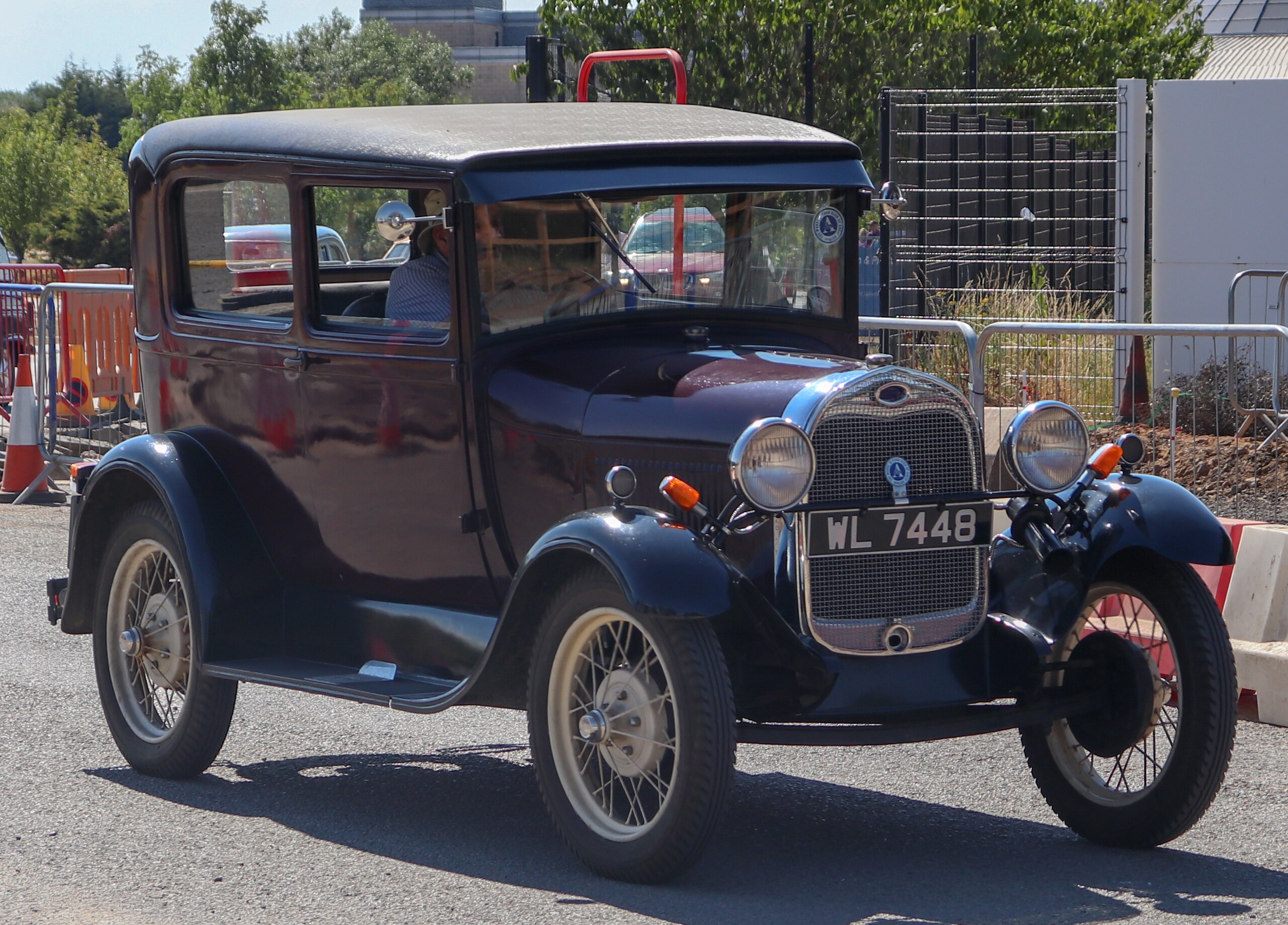 Vauxford, CC BY-SA 4.0, Wikimedia Commons
Vauxford, CC BY-SA 4.0, Wikimedia Commons
Chevrolet AE Independence Six (1931)
The Six boosted Chevrolet’s longstanding rivalry with Ford. Chevrolet had beaten Ford sales in 1927, but that was during factory shutdowns to prepare for the Model A. But in 1931, the Chevy Six was on a roll, with its 50 horsepower topping Ford by 10 hp, and sales topping the Model A.
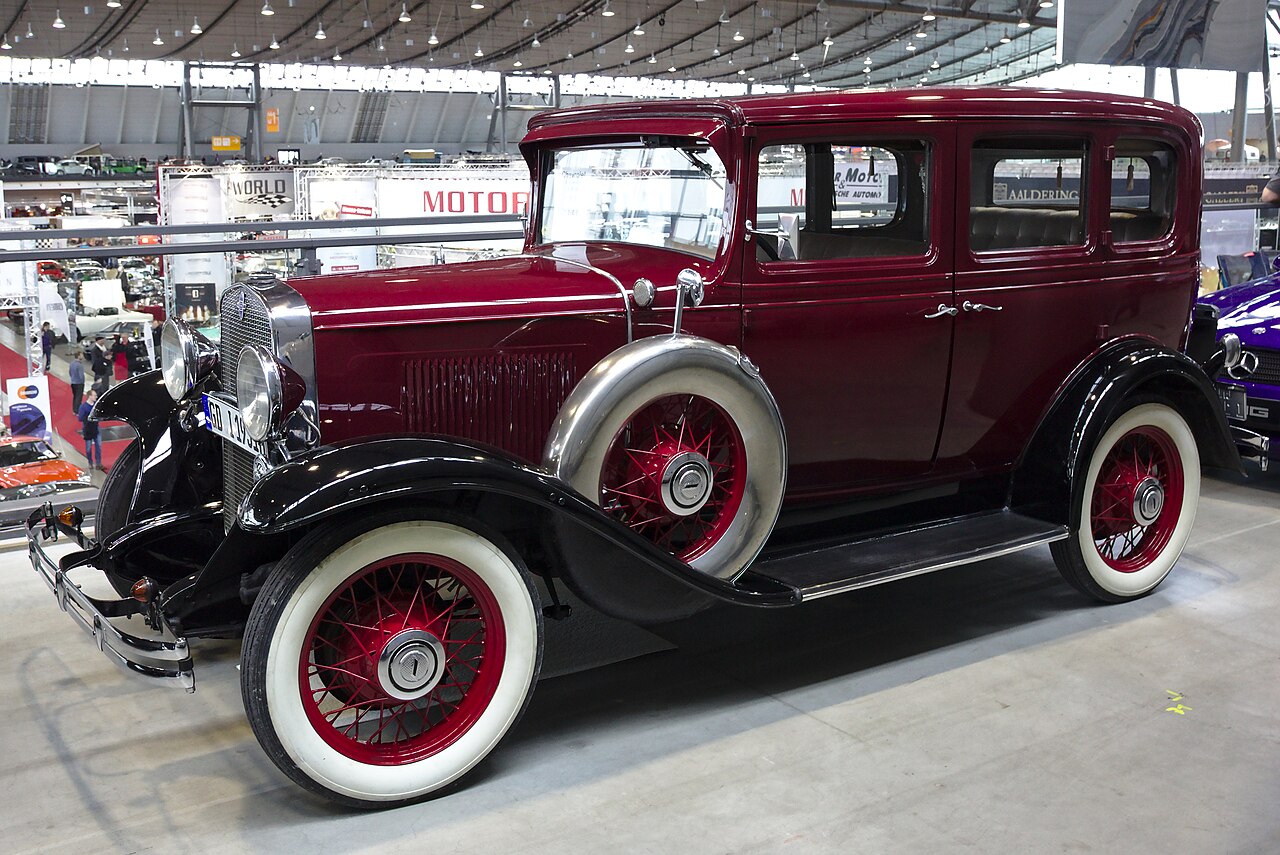 Alexander Migl, CC BY-SA 4.0, Wikimedia Commons
Alexander Migl, CC BY-SA 4.0, Wikimedia Commons
Chevrolet AE Independence Six (1931)
In 1929, Chevrolet introduced the Six as a way to get a six-cylinder for the price of a four-cylinder. In 1932, Ford responded with a V8 touting 65 hp, but Chevrolet had by then boosted its V6 to 60 hp, almost as powerful, and without the Ford V8’s bumpy ride.
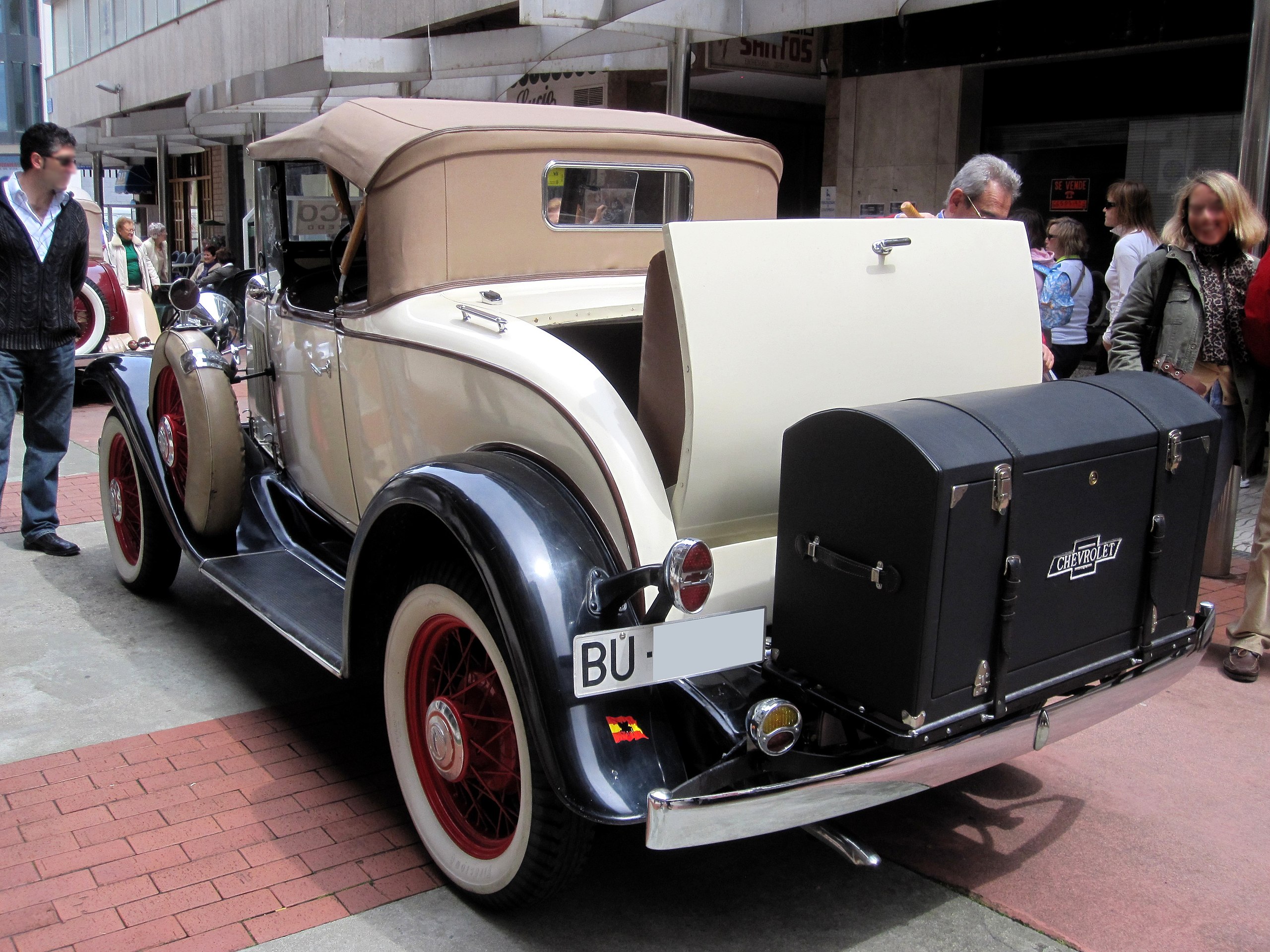 Spanish Coches, CC BY 2.0, Wikimedia Commons
Spanish Coches, CC BY 2.0, Wikimedia Commons
Ford Model 18 V8 (1932 To 1953)
A Ford V8 came about because the auto tycoon and inventor wanted to make sure his company stayed cutting edge. Even if the V8 motor induced some mini-quakes, and Ford never quite figured out how to keep his motor cool, the Model 18 was genuinely innovative.
Ford Model 18 V8 (1932 To 1953)
The Model 18’s engine offered 65 horsepower and had an all-in-one cylinder block and crankcase, which all fit into the same space that the Model B, also new for 1932, used for a four-cylinder motor. The Model 18’s light weight and power marked a new high in car design.
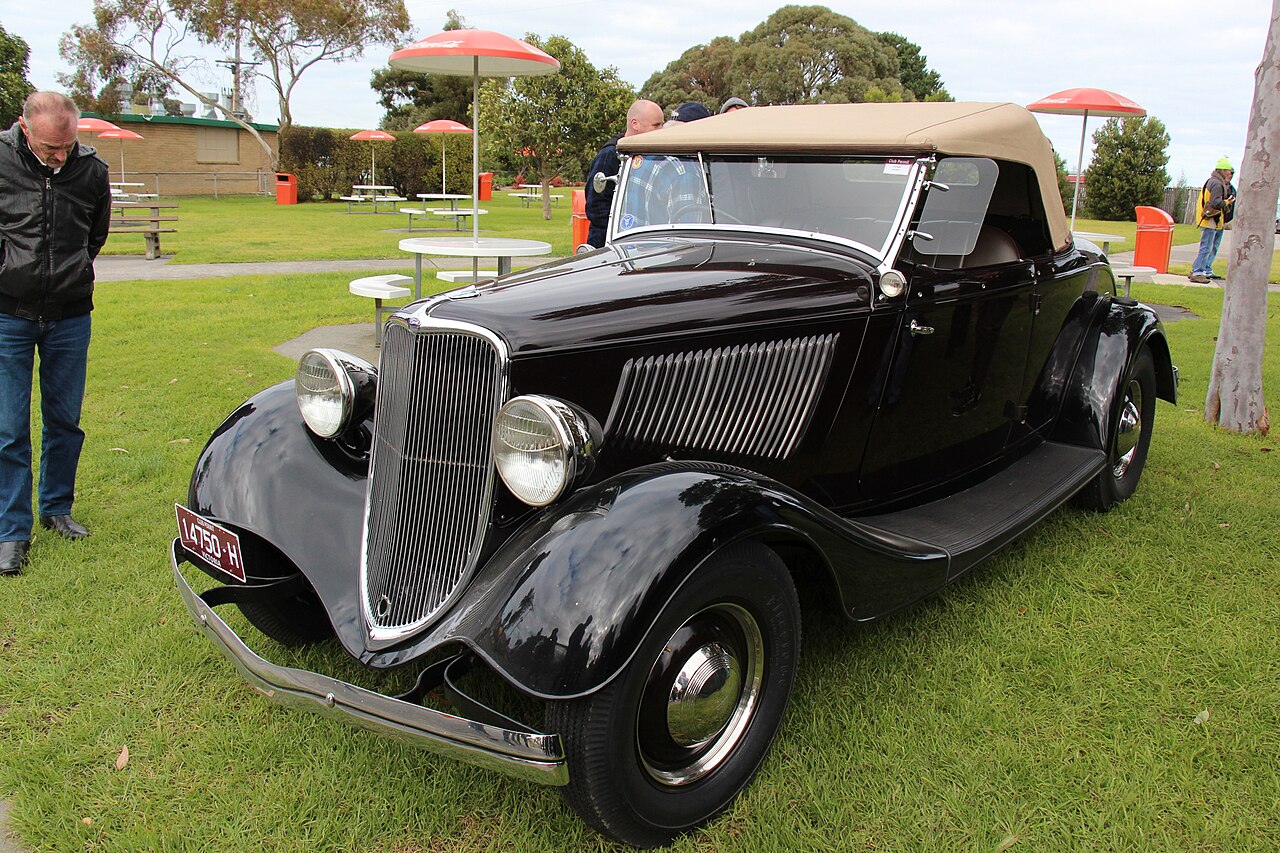 Sicnag, CC BY 2.0, Wikimedia Commons
Sicnag, CC BY 2.0, Wikimedia Commons
Duesenberg Model J (1929 To 1937)
The Great Depression showed up soon after this luxury car made its debut, but that didn’t stop Hollywood A-listers and business magnates from buying—and showing off—their extravagant wheels. Actor Clark Gable owned one, as did chewing-gum ruler supreme Philip K Wrigley.
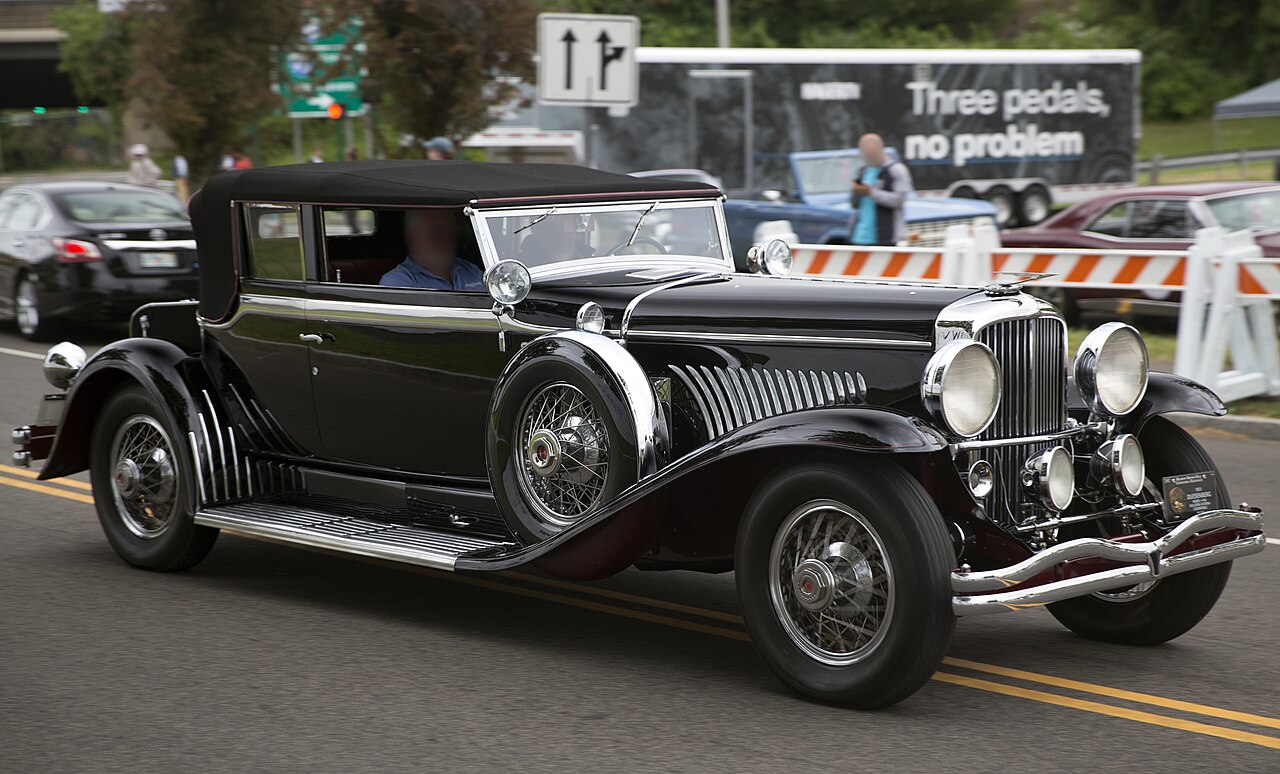 Mr.choppers, CC BY-SA 3.0, Wikimedia Commons
Mr.choppers, CC BY-SA 3.0, Wikimedia Commons
Duesenberg Model J (1929 To 1937)
The interiors featured elaborate and luxurious coachwork, but just as impressive was its eight-cylinder motor putting out 256 hp, letting the Model J speed past 100 mph (161 km/h). And for those who wanted to ride even more horses, a supercharged 320-hp version was available.
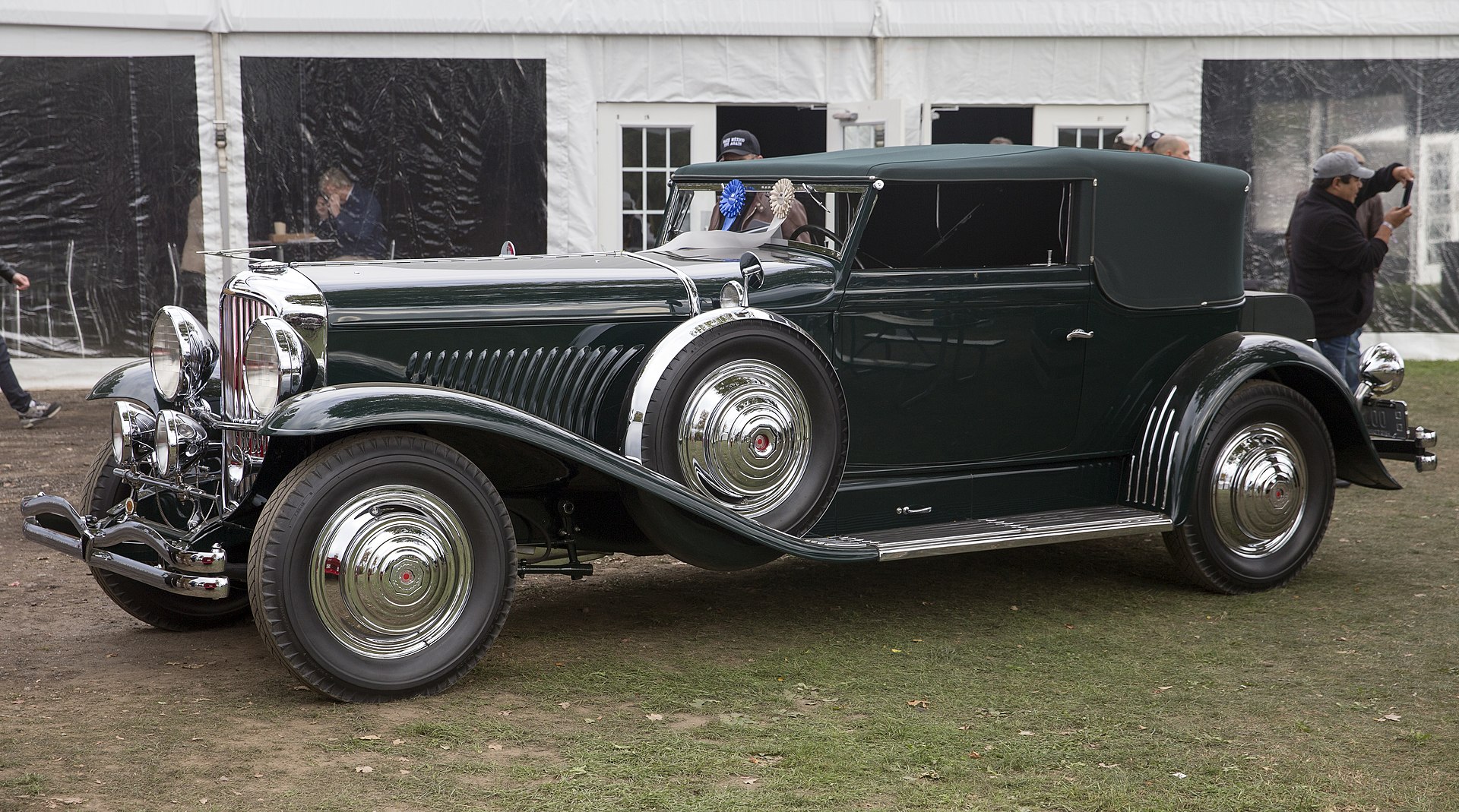 Mr.choppers, CC BY-SA 3.0, Wikimedia Commons
Mr.choppers, CC BY-SA 3.0, Wikimedia Commons
Chrysler Airflow (1934 To 1937)
But the Depression wasn’t so kind to Walter P Chrysler’s Airflow. Using data from early wind tunnels, Chrysler and his engineers came up with lots of curves including a sloping radiator grille and a rounded, continuous windshield on a teardrop-shaped body of lightweight steel.
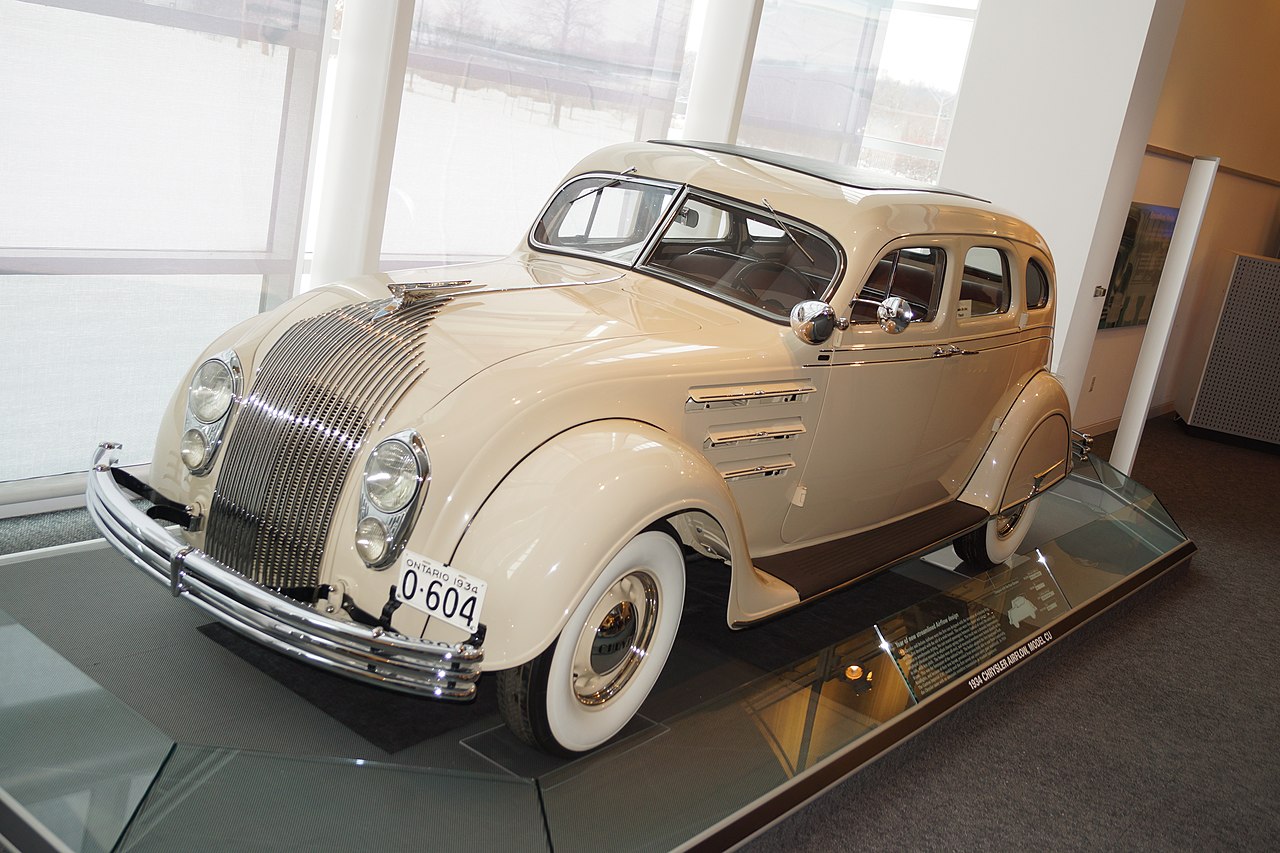 Greg Gjerdingen, CC BY 2.0, Wikimedia Commons
Greg Gjerdingen, CC BY 2.0, Wikimedia Commons
Chrysler Airflow (1934 To 1937)
Apparently it could fly like a bird, as ads showed the car jumping off a cliff, then merrily driving off. But despite the business and engineering pedigree of all involved, sales never soared high enough to justify hatching more of this avian imitator, and it soon plummeted to Earth.
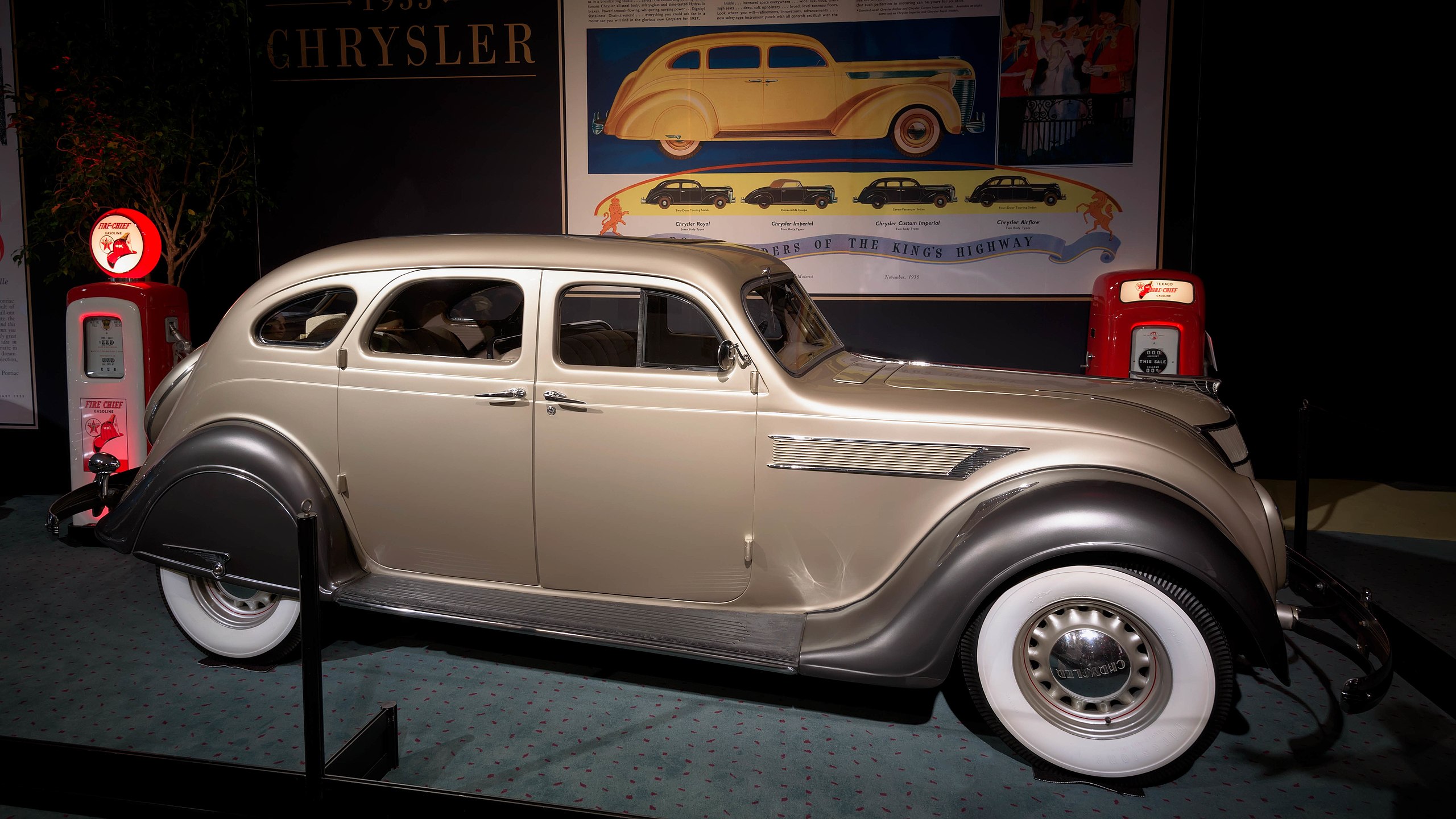 Joe deSousa, Wikimedia Commons
Joe deSousa, Wikimedia Commons
Ford (1949)
Edsel died in 1943 and Henry in 1947, so grandson Henry Ford II was in charge as Detroit went back to focusing on cars after the end of World War II. The stubborn corners of earlier designs were thrown out the window, replaced by a smoother body and aerodynamically friendly sides.
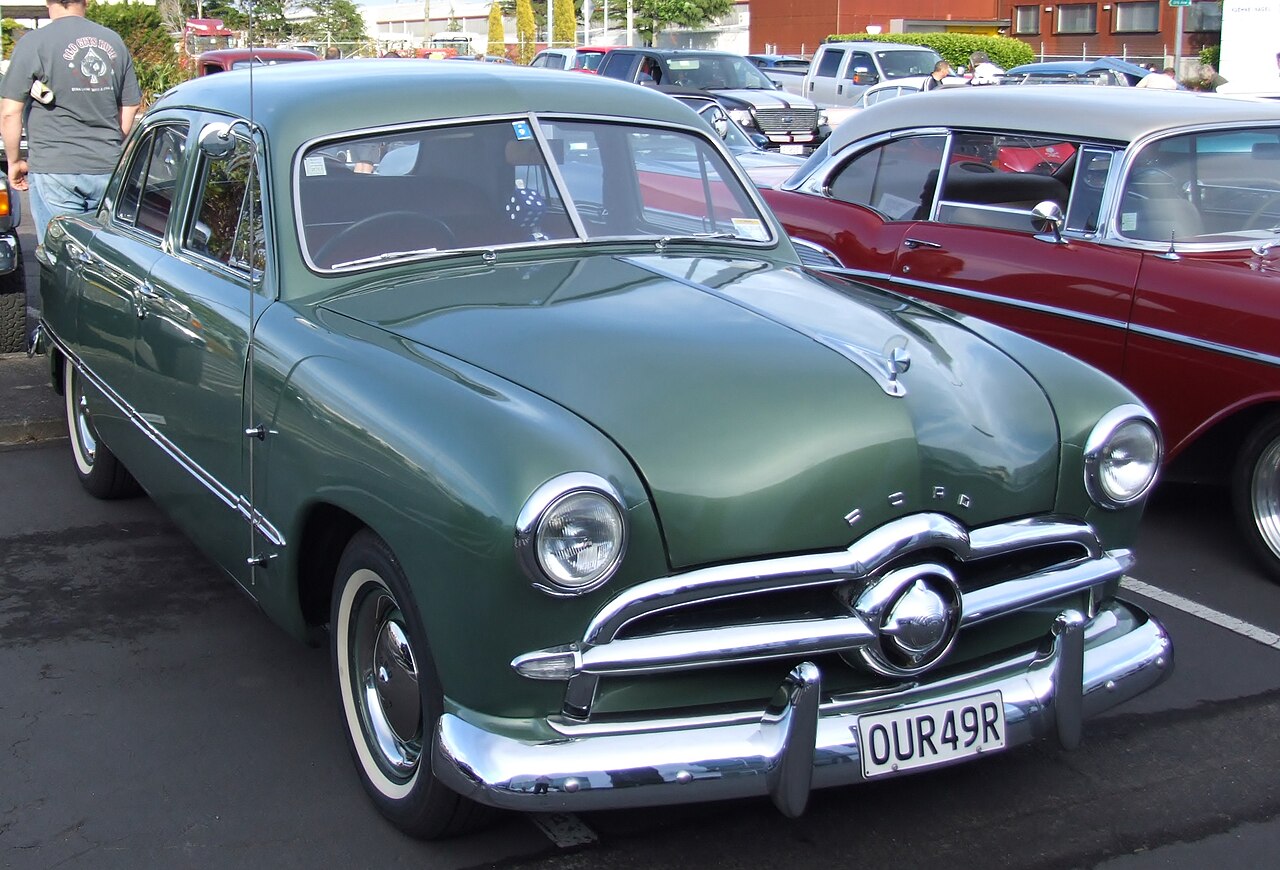 GPS 56, CC BY 2.0, Wikimedia Commons
GPS 56, CC BY 2.0, Wikimedia Commons
Ford (1949)
The new design also updated the suspension and added friendly curves to the interior—a gentler ride for body and eyes. The friendly curves seemed to be what a postwar America desired, with Ford’s design outselling new offerings from Chevrolet and Plymouth.
Chevrolet Corvette Roadster (1953 To 1955)
General Motors was pushing for a sports car, and its Chevrolet division came up with a look inspired by the Jaguar XK-120. In its first year, only 300 Corvettes were made, all assembled by hand, and offering 150 horsepower. Sales started slow, then eventually picked up speed.
 Rex Gray, CC BY 2.0, Wikimedia Commons
Rex Gray, CC BY 2.0, Wikimedia Commons
Chevrolet Corvette Roadster (1953 To 1955)
An optional 195-hp overhead-valve V8 engine for 1955 caused some buzz, but the 1960s was when the Corvette really started to symbolize the call to “freedom and adventure”. The Corvette is now in its eighth generation, but it all began with 300 handmade Polo White fiberglass cars.
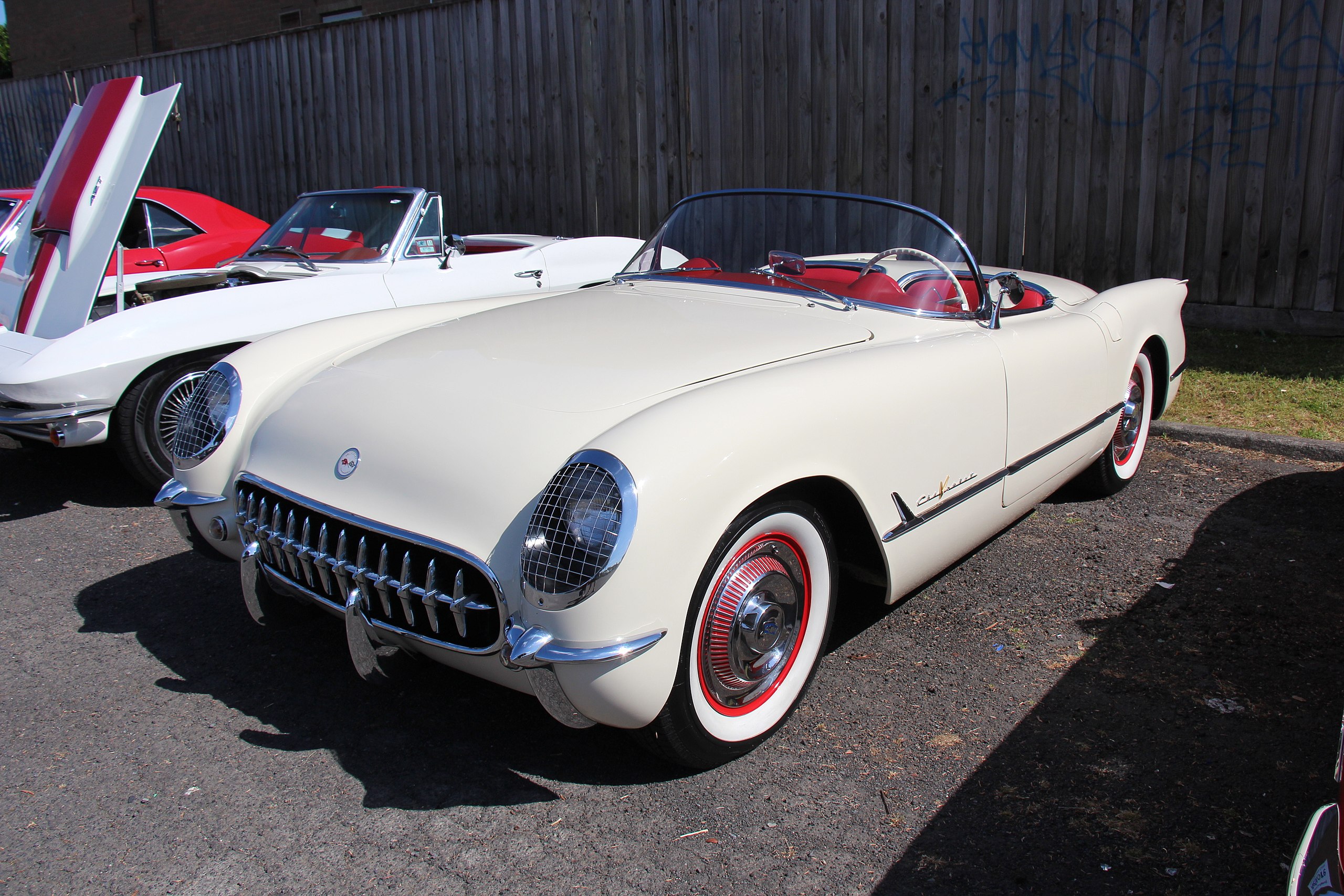 Sicnag, CC BY 2.0, Wikimedia Commons
Sicnag, CC BY 2.0, Wikimedia Commons
Chrysler C‑300 Two‑Door Hardtop (1955)
Apparently designed for rebel spirits with a hefty pocketbook, the C-300 used a 331 ci Hemi engine that came with dual four-barrel carburetors and bragging rights to that year’s most horses, namely 300. And the heavy engine helped push the car to over 4,000 lbs (1,800 kg).
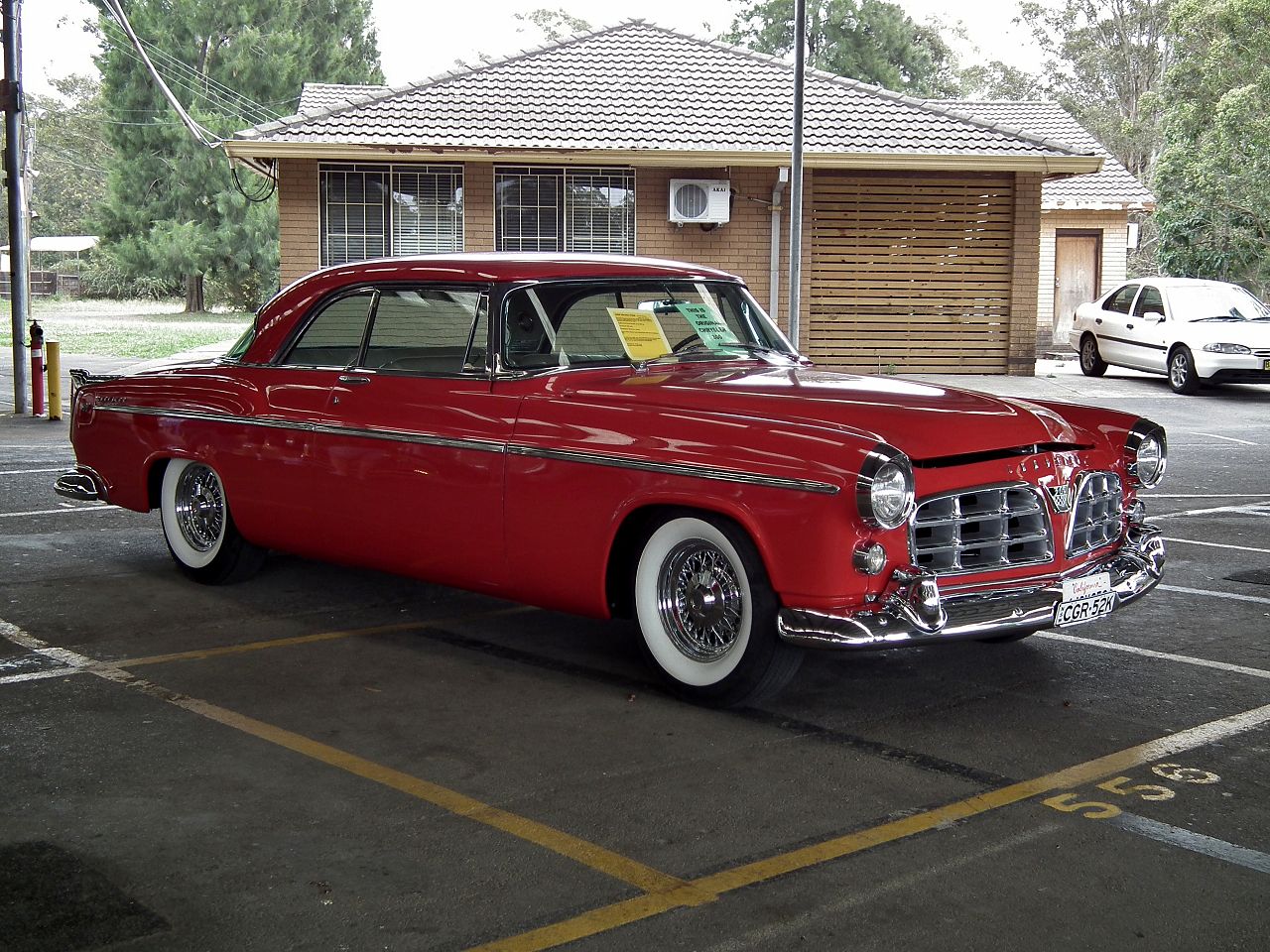 sv1ambo, CC BY 2.0, Wikimedia Commons
sv1ambo, CC BY 2.0, Wikimedia Commons
Chrysler C‑300 Two‑Door Hardtop (1955)
Chrysler engineers thankfully added a tougher suspension, which also proved helpful once racing enthusiasts got involved. Karl Kiekhaefer’s drivers racked up the stockcar wins with this speedy-yet-rock-solid tribute to the New Yorker Deluxe, with a deluxe price to match.
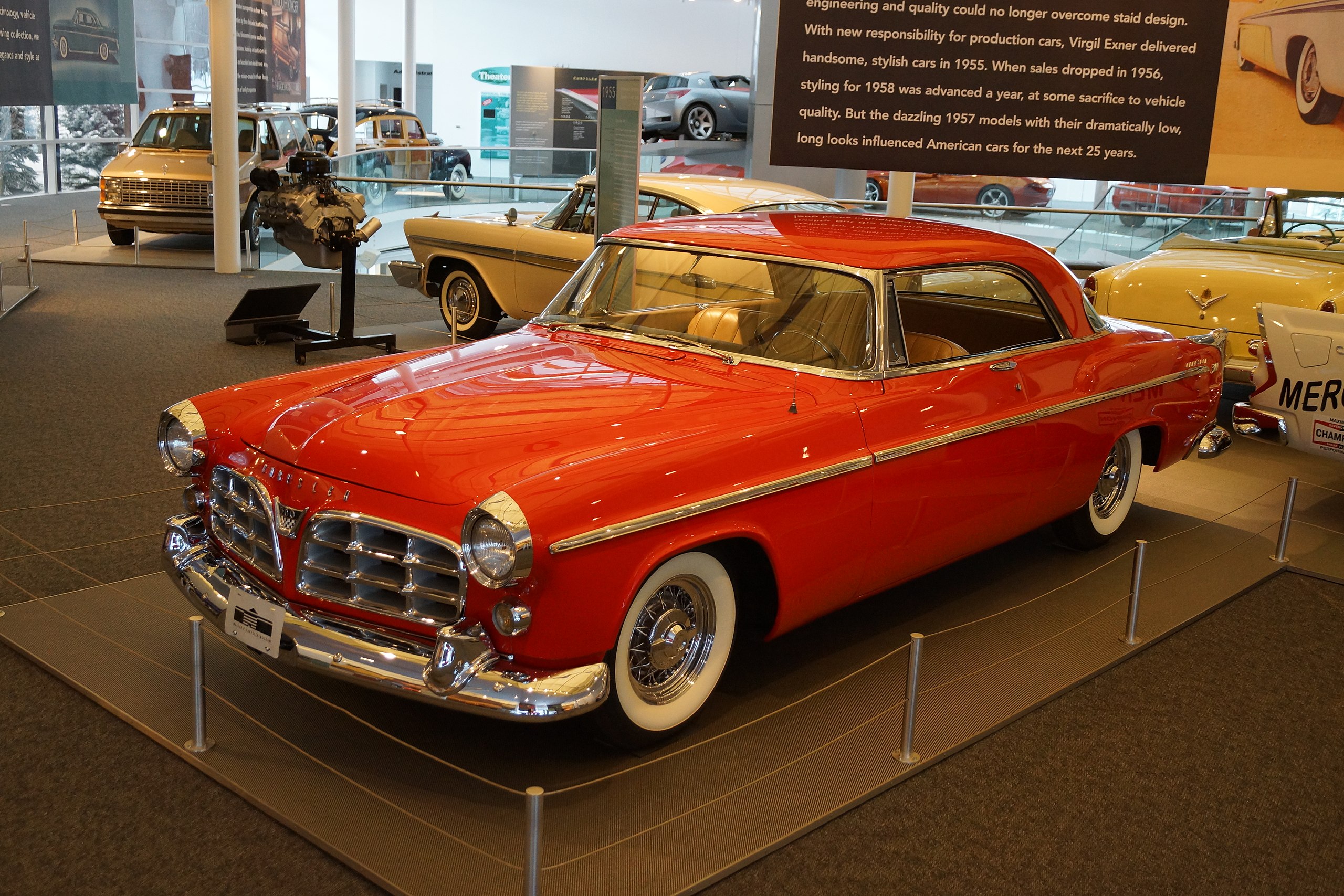 Greg Gjerdingen, CC BY 2.0, Wikimedia Commons
Greg Gjerdingen, CC BY 2.0, Wikimedia Commons
Chevrolet (1955)
Chevrolet’s top engineer, Ed Cole, came up with a lightweight small-block engine packing a high rpm, thanks to big valves, well-designed cylinder heads, and short piston strokes. In fact, the 1955 Chevy’s engine is the first short-stroke V8 of the era, and to the tune of 265 cubic inches.
Chevrolet (1955)
These under-the-hood innovations were complemented by a redesign of the exterior, keeping the chrome in check and tweaking the proportions. But things didn’t go totally smoothly. Cracked pistons were an early problem, and filter issues meant oil changes were a frequent necessity.
DeSoto Adventurer (1957 To 1959)
As with the 1955 C-300, the De Soto Adventurer used a powerful Hemi engine, this time 345 ci boasting 345 horsepower. That’s not a typo, for the company touted that the Adventurer was the only model to offer, as a standard feature, a motor reaching 1 hp for each cubic inch of displacement.
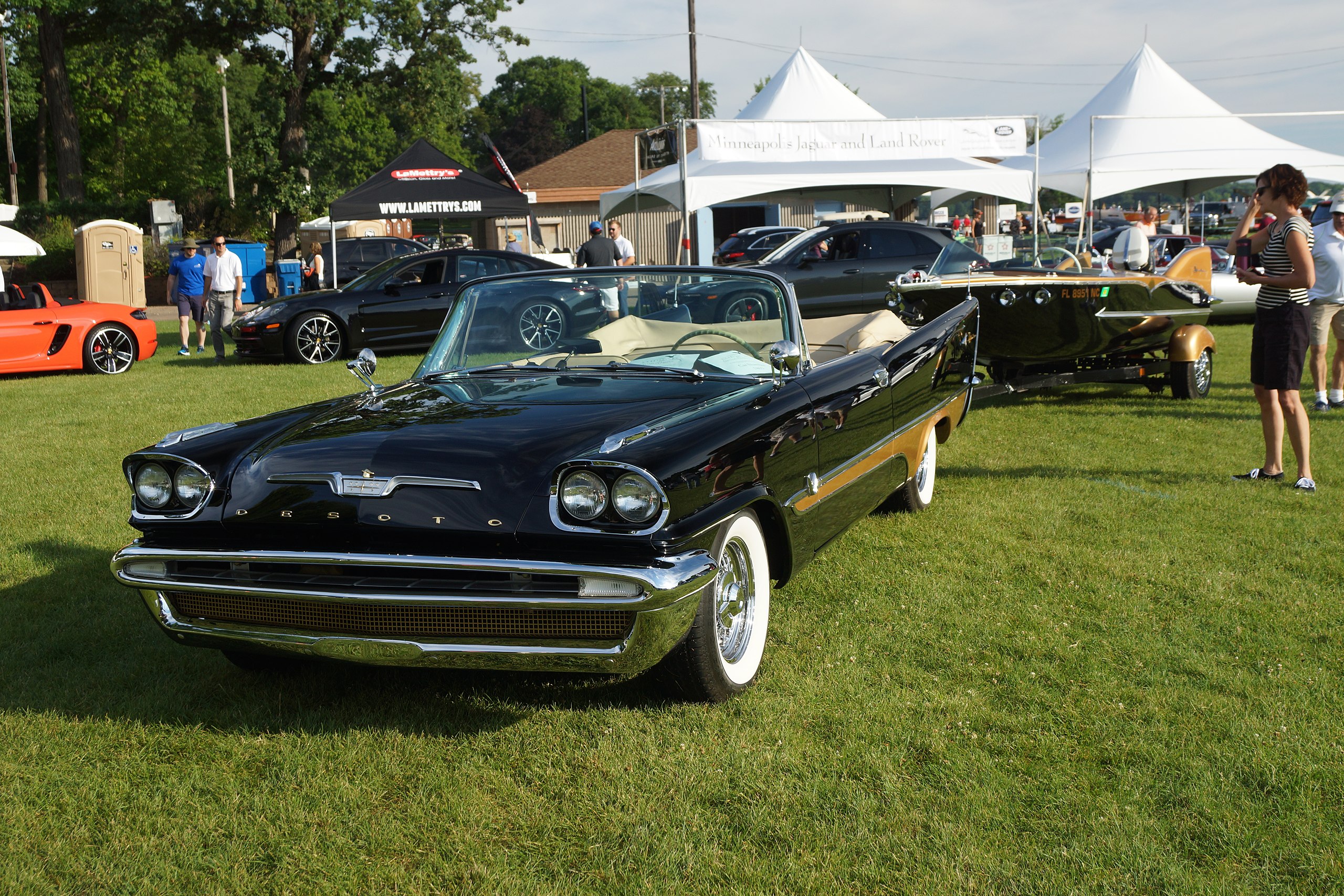 Greg Gjerdingen, CC BY 2.0, Wikimedia Commons
Greg Gjerdingen, CC BY 2.0, Wikimedia Commons
DeSoto Adventurer (1957 To 1959)
And another comparison with the 1955 C-300 is the “Forward Look” pushed by Virgil Exner, a famed designer at Chrysler who seemed to like cars to look like they were in motion even when parked. He even tested the tailfins he so liked in wind tunnels to make sure they weren’t a drag.
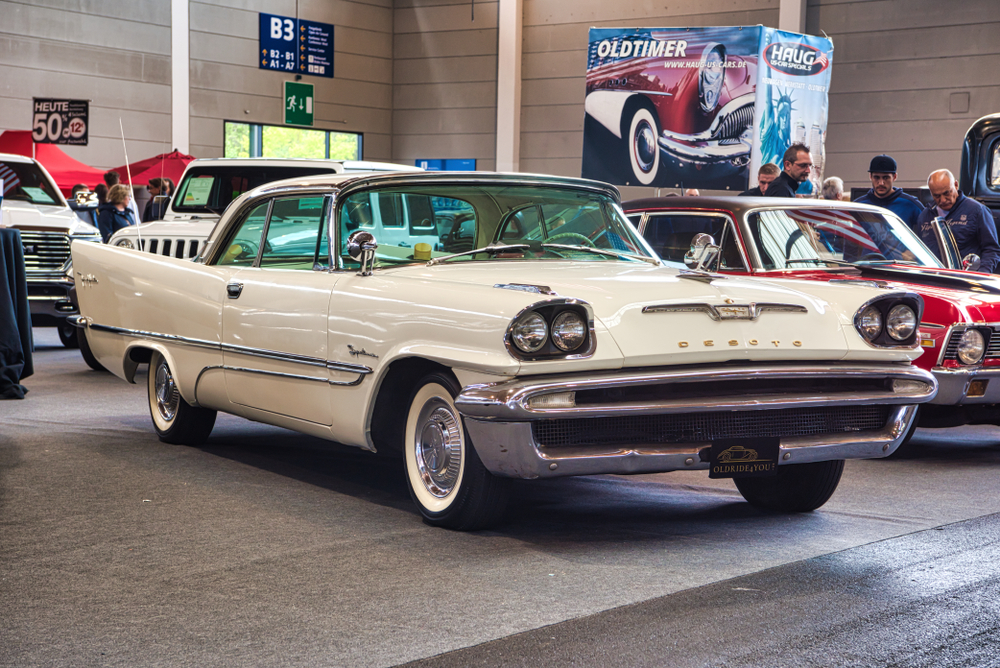 Dmitry Eagle Orlov, Shutterstock
Dmitry Eagle Orlov, Shutterstock
Edsel (1958 To 1960)
Ford wanted to add another model to its middle-of-the-road lineup, something that was almost as expensive as a Mercury. Edsel Ford’s son was in charge of the project, and his late father’s name was chosen out of 18,000 possibilities. Unfortunately, this family tribute just caused grief.
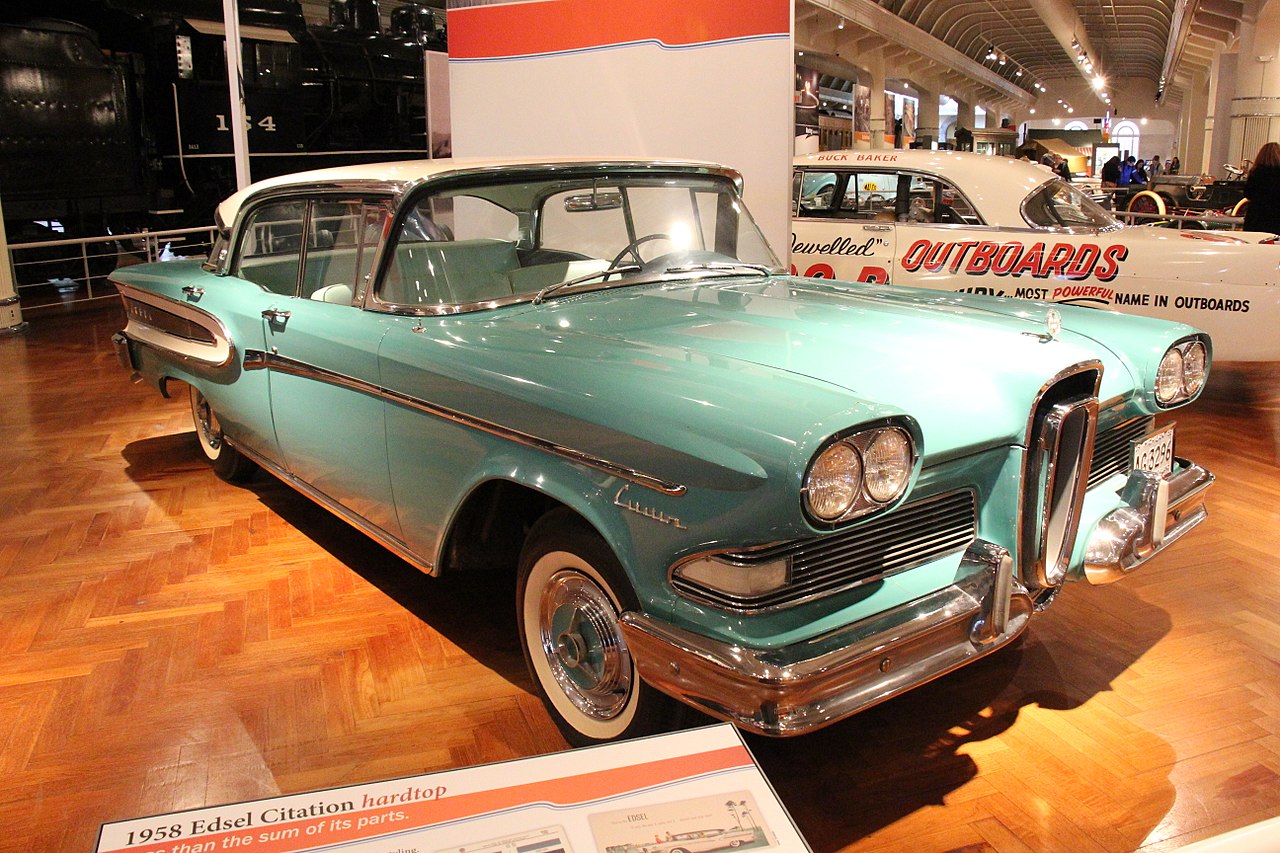 Sicnag, CC BY 2.0, Wikimedia Commons
Sicnag, CC BY 2.0, Wikimedia Commons
Edsel (1958 To 1960)
The company opened up a whole new division to make Edsel cars, and touted their innovative design. But critics soon realized that their look and engineering mostly came from other divisions of Ford, and when different, were often horrifying—such as a “horse collar” grille.
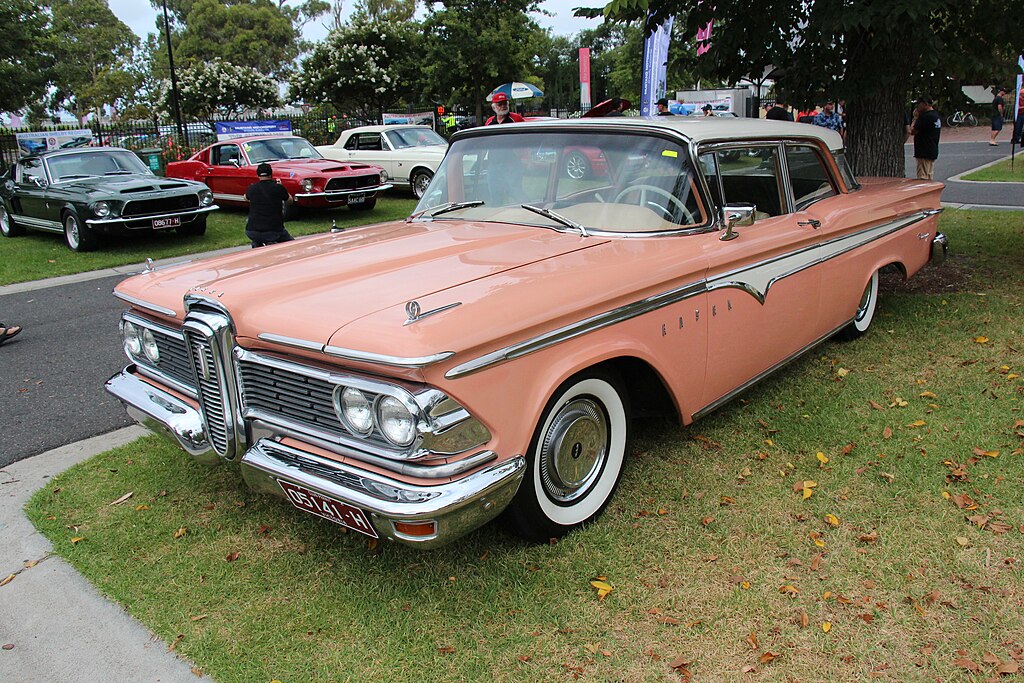 Sicnag, CC BY 2.0, Wikimedia Commons
Sicnag, CC BY 2.0, Wikimedia Commons
Ford Mustang (1964½)
Introduced well into the 1964 model year, the Mustang was just a Ford Falcon with some new bodywork, but customers flocked to buy it, inaugurating a “pony car” category that galloped through the 1960s. Some say the Ford Mustang even rivals the Model T in significance.
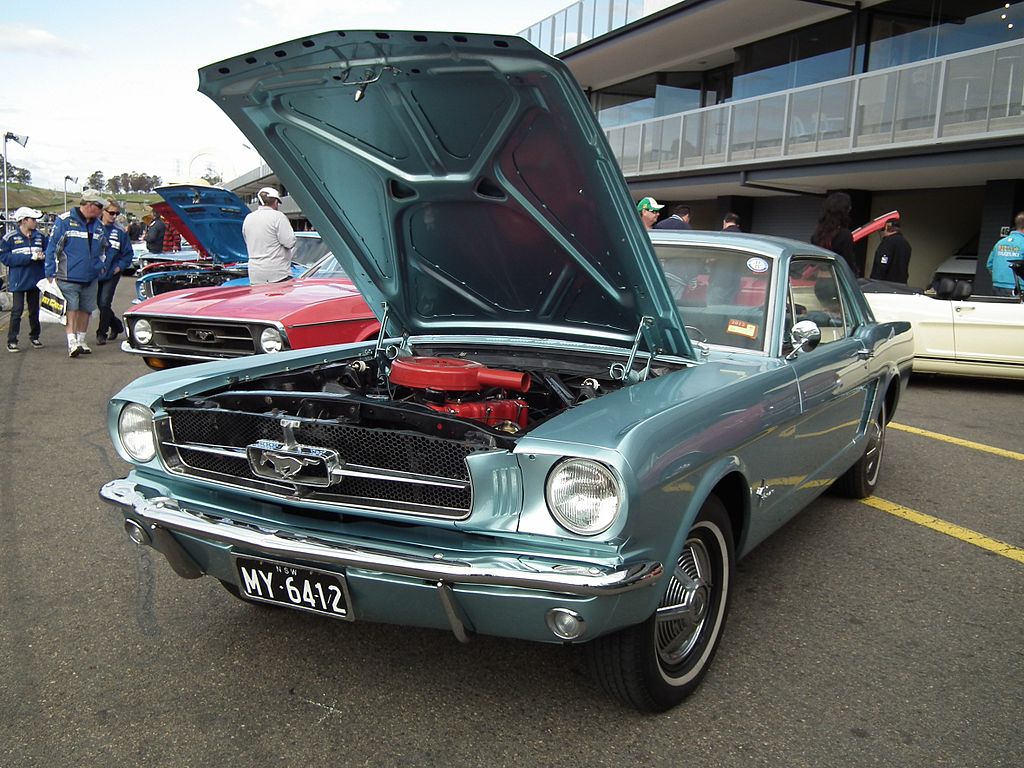 sv1ambo, CC BY 2.0, Wikimedia Commons
sv1ambo, CC BY 2.0, Wikimedia Commons
Ford Mustang (1964½)
In its powerful variants, the Mustang won numerous races, reinforcing its sporty appeal to Baby Boomers—who needed a four-seater for their kids. Named after a fighter plane, the Mustang took off like no one expected, selling 100,000 within three months, not the full year as projected.
Chevrolet Corvair (1960 To 1969)
Sometimes taking a risk pays off. Sometimes it doesn’t. Chevrolet wanted to ride the counterculture wave of the Volkswagen’s Beetle, and put a V6 engine in the back of a stubby-nosed Corvair. Motor Trend named it “Car of the Year” for 1960, and it did get noticed.
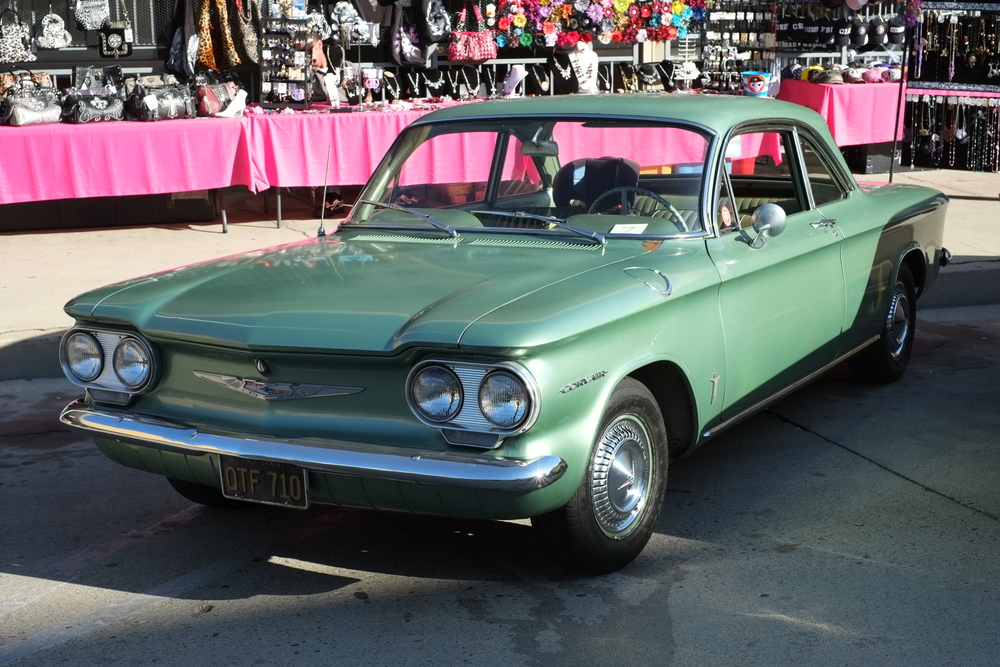 Richard Thornton, Shutterstock
Richard Thornton, Shutterstock
Chevrolet Corvair (1960 To 1969)
But not all publicity is good publicity. A lot of American drivers couldn’t handle a rear-mounted engine, sometimes spinning out around corners. Then Ralph Nader highlighted the Corvair in his book Unsafe At Any Speed (1965). Chevrolet made changes, but the damage was done.
Shelby Cobra (1962)
Racing driver Carroll Shelby wanted to put a powerful American engine in a classy European body. Chevrolet turned him down, but Ford said yes. So Shelby was able to put the company’s 260 or 289 engine in the bodies of English AC Cars, creating a sensation on the GT circuit.
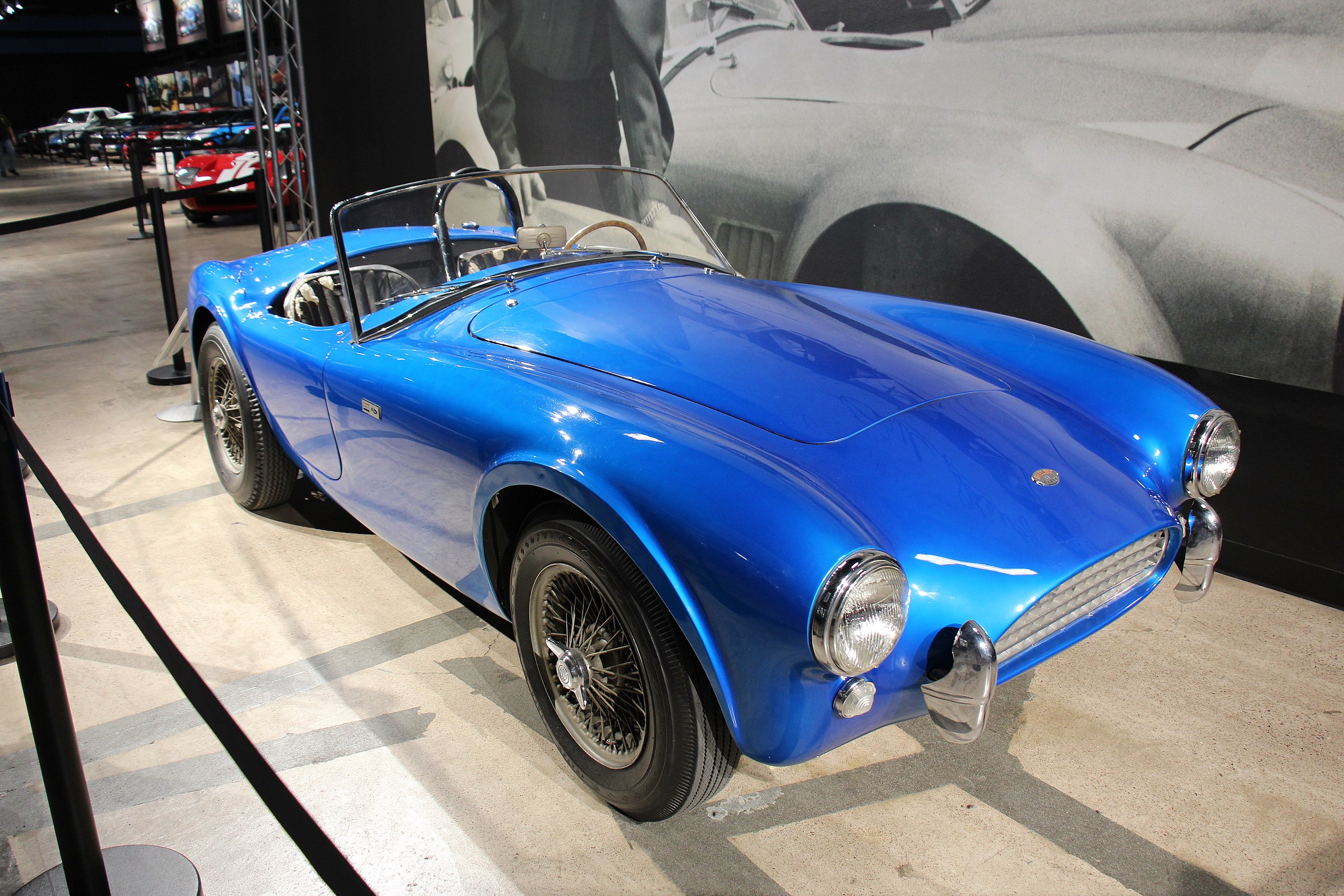 Sicnag, CC BY 2.0, Wikimedia Commons
Sicnag, CC BY 2.0, Wikimedia Commons
Shelby Cobra (1962)
In 1965, Shelby was the first American manufacturer to win the GT Championship. And if imitation is the sincerest form of flattery, then the Shelby Cobras are often flattered, with many counterfeits popping up, sometimes with 260/289 engines, sometimes with later ones.
Pontiac Le Mans GTO (1964)
Pontiac president Pete Estes and chief engineer John DeLorean had a plan to unseat Chevrolet as the winningest division at GM, and they needed power—engine power—to ride their road to victory. But the top brass at GM had banned putting big engines into new mid-sized models.
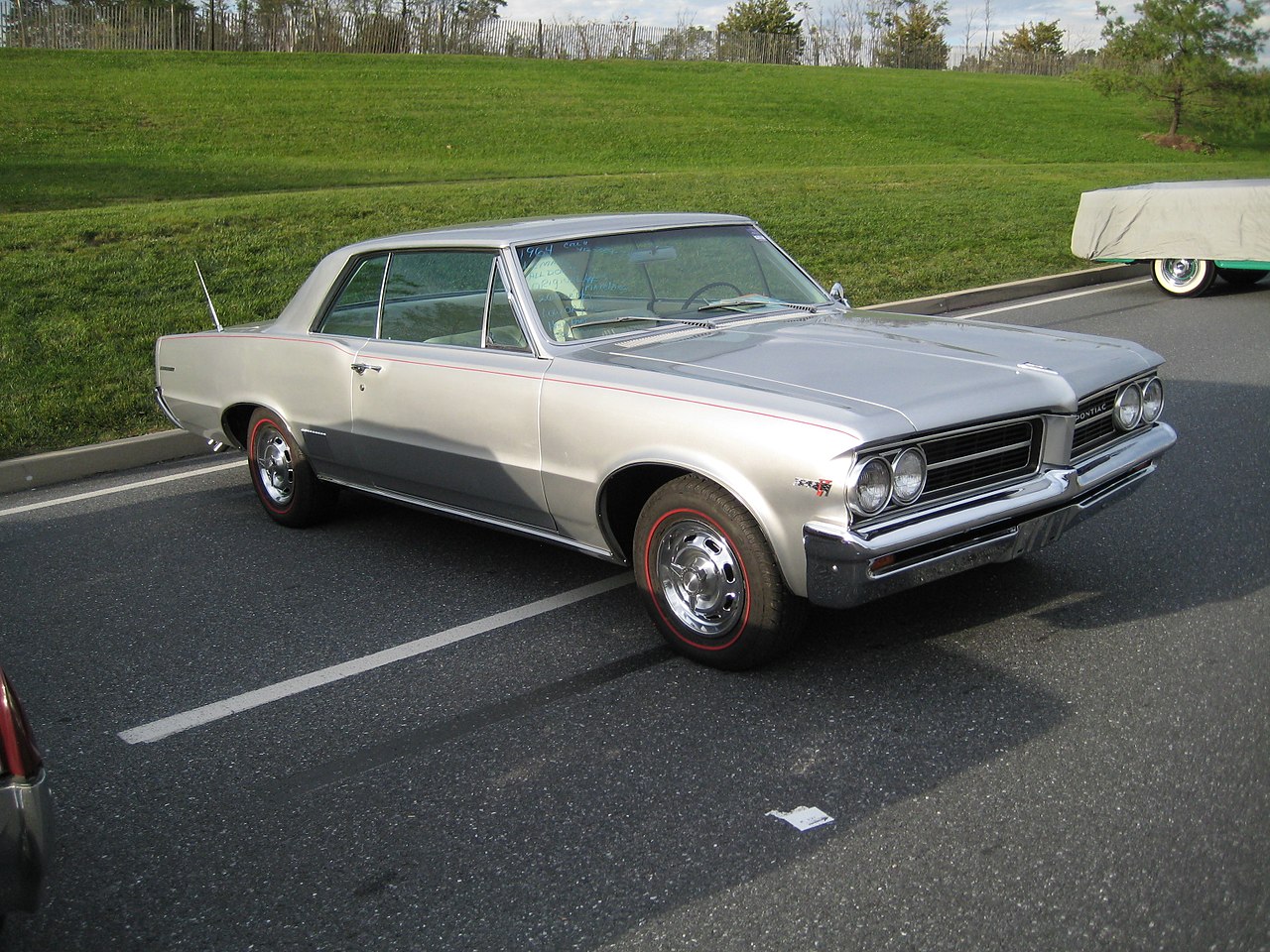 JOHN LLOYD, CC BY 2.0, Wikimedia Commons
JOHN LLOYD, CC BY 2.0, Wikimedia Commons
Pontiac Le Mans GTO (1964)
The rebel solution was to offer their new 389 ci V8 as an option for the 1964 Le Mans—halfway through the model year. Buyers loved the idea, and by 1966 top execs had given in, thereby launching a standalone GTO model and supercharging the careers of Estes and DeLorean.
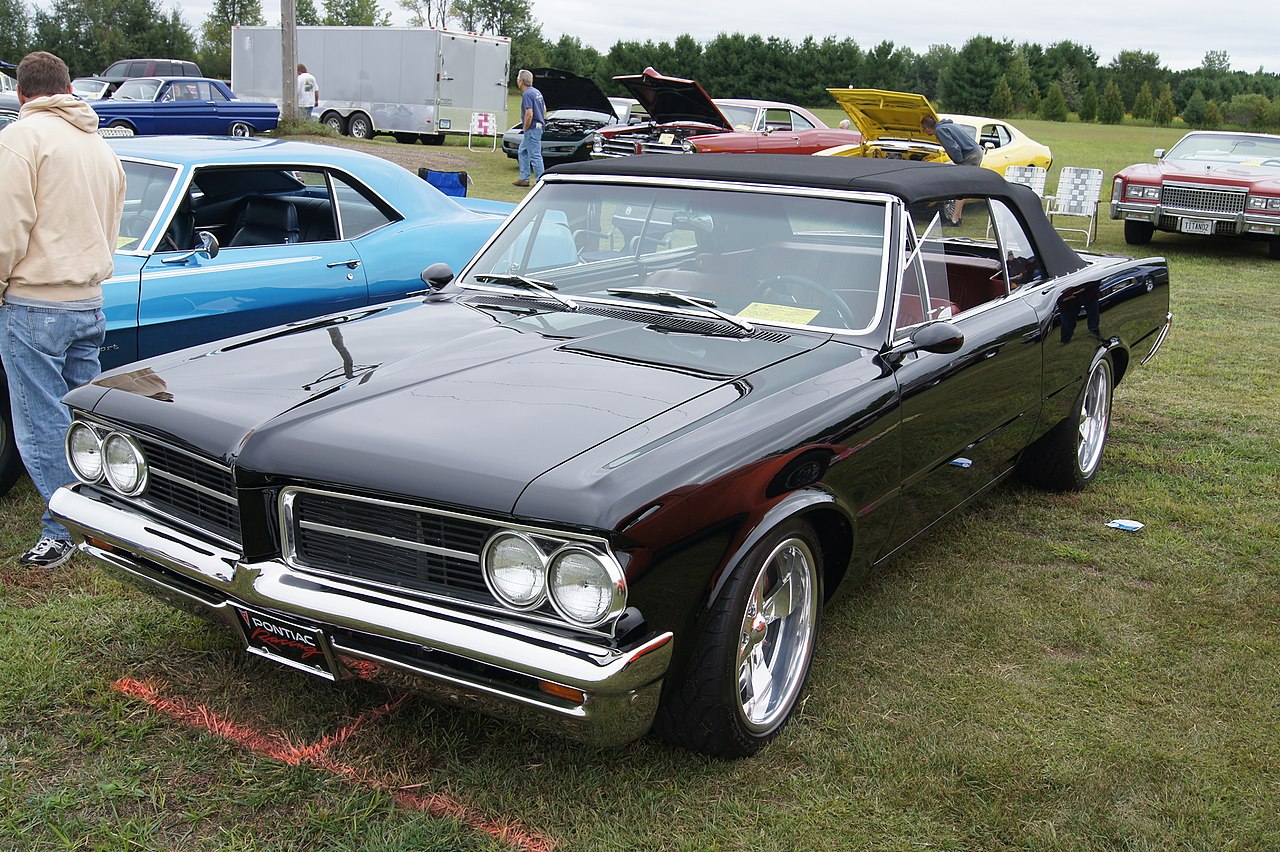 Greg Gjerdingen, CC BY 2.0, Wikimedia Commons
Greg Gjerdingen, CC BY 2.0, Wikimedia Commons
Chevrolet Vega (1971)
Let’s return to our parade of less successful models. The Chevy Vega looked nice and specs sounded fine. It had bucket seats and floor-shift transmission. It had a lightweight engine with a brand-new die-cast cylinder block. And it simply had a sports car aura about it.
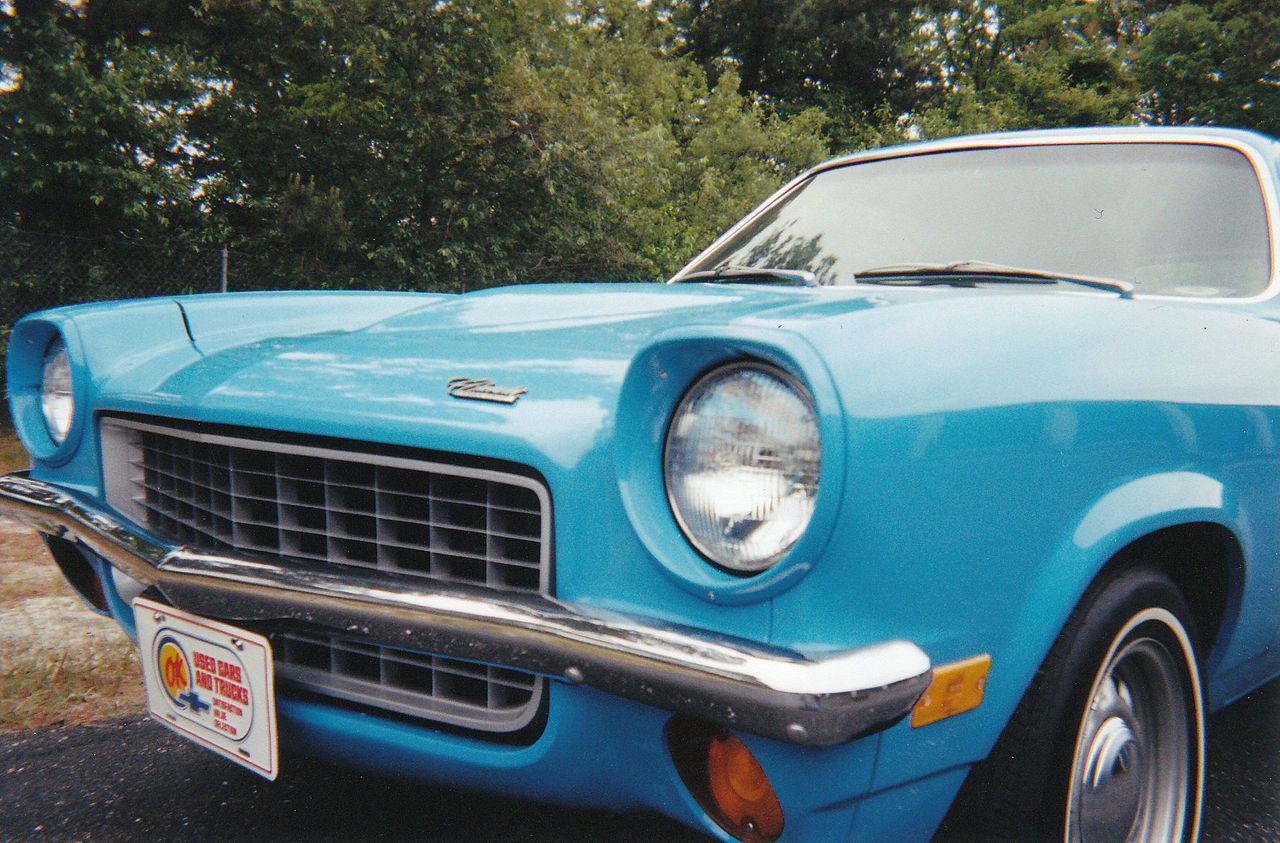 Barnstarbob, CC BY-SA 3.0, Wikimedia Commons
Barnstarbob, CC BY-SA 3.0, Wikimedia Commons
Chevrolet Vega (1971)
Motor Trend named Vega “Car of the Year,” though they’d also said that about the Chevrolet Corvair. First impressions were misleading, as customers complained about rust buildup and a shaking, quaking engine that overheated. Despite a redesign, the Vega’s star soon blinked off.
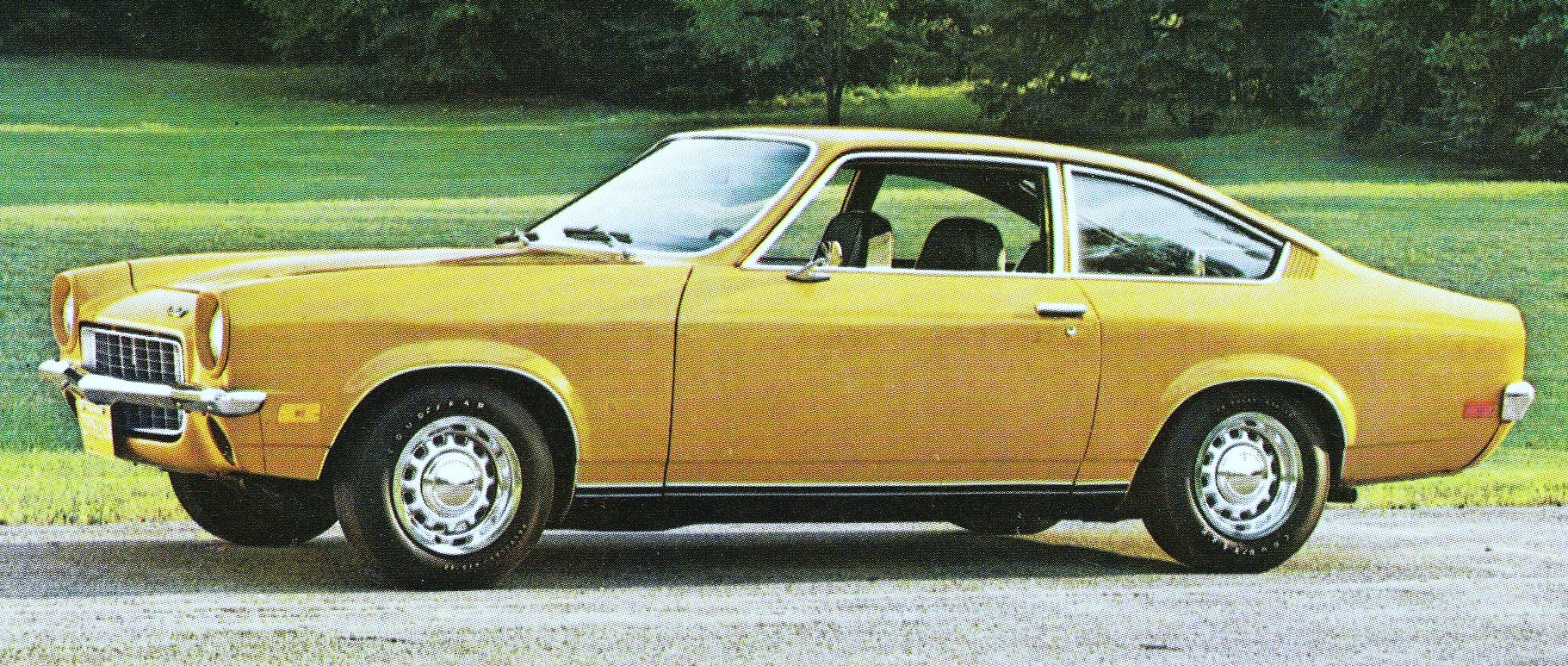 Chevrolet pre-1978 (no copyright), Wikimedia Commons
Chevrolet pre-1978 (no copyright), Wikimedia Commons
Ford Pinto (1971 To 1980)
Lee Iacocca’s Ford Pinto turned out to be a really bad idea. The engines came from England and Germany, and had worked fine there. There were bucket seats and a floor-mounted gearshift. Ford’s answer for the subcompact market should have worked out great. But it didn’t.
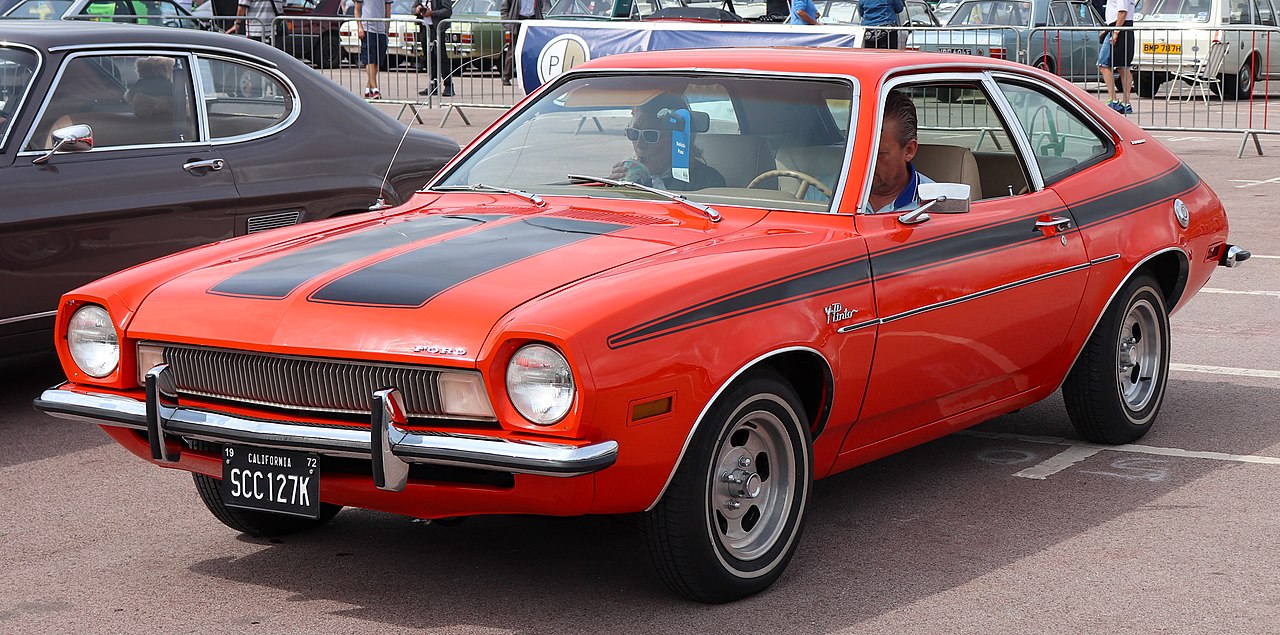 Vauxford, CC BY-SA 4.0, Wikimedia Commons
Vauxford, CC BY-SA 4.0, Wikimedia Commons
Ford Pinto (1971 To 1980)
The Pinto’s fatal flaw was the gas tank, which had a higher-than-normal chance of catching on fire in rear-end collisions. Ford moved the tank starting with 1976 models. But it recalled earlier Pintos only in 1977. Having moved too slow, Ford couldn’t reverse the Pinto’s bad reputation.
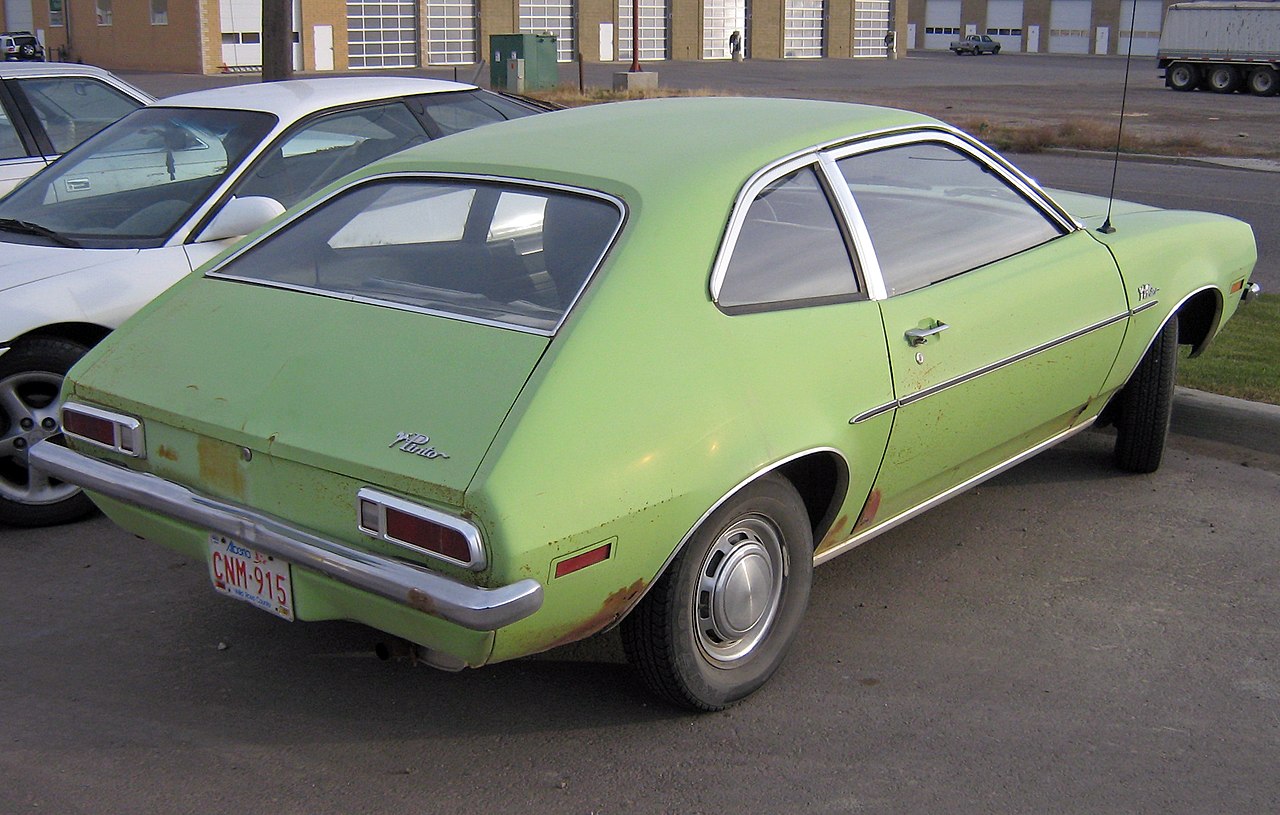 dave_7, CC BY-SA 2.0, Wikimedia Commons
dave_7, CC BY-SA 2.0, Wikimedia Commons
DeLorean DMC‑12 (1981 To 1982)
If the DeLorean really was the time machine Back To The Future would have us believe, John DeLorean would likely have gone back into the past and scrapped the very idea of the “ethical sportscar” he said he wanted to build. It would be a sportscar that raced into controversy.
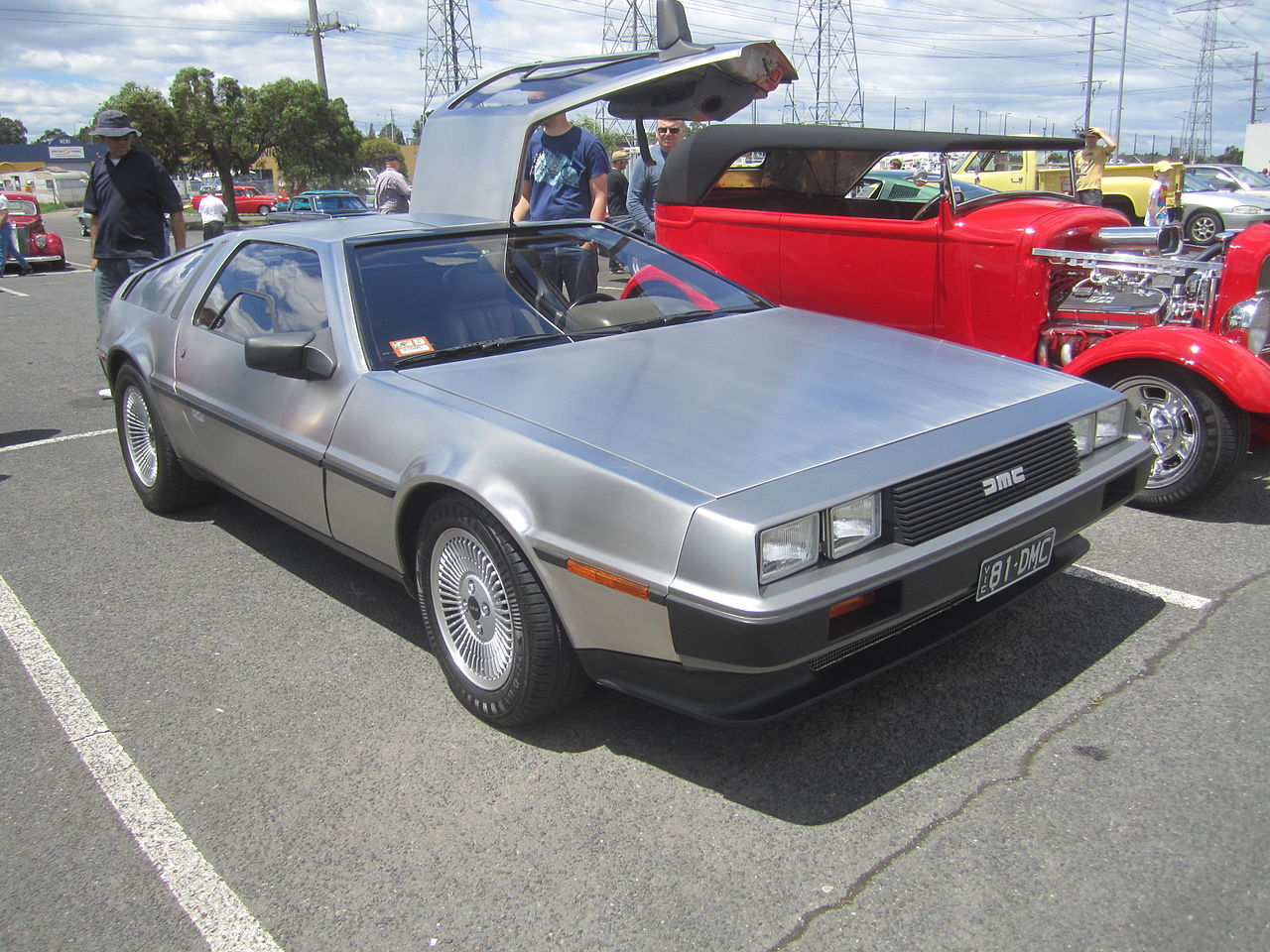 Sicnag, CC BY 2.0, Wikimedia Commons
Sicnag, CC BY 2.0, Wikimedia Commons
DeLorean DMC‑12 (1981 To 1982)
With backing from the UK government, DeLorean built a factory in Northern Ireland, and made 9,000 of the gull-winged futuristic-looking cars in 1981 and 1982 before going bankrupt. Despite poor performance and build quality, the DeLorean has since developed quite a cult following.
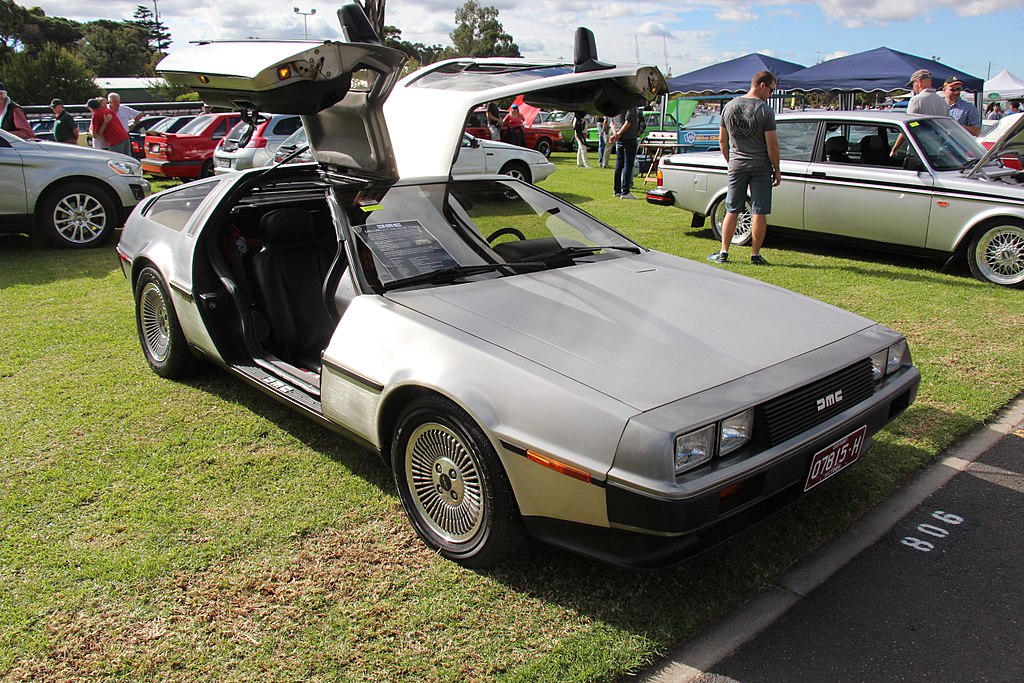 Sicnag, CC BY 2.0, Wikimedia Commons
Sicnag, CC BY 2.0, Wikimedia Commons
Plymouth/Dodge ‘K‑Car’ (1981)
Chrysler was in really bad shape as the 1980s began, sliding down a slippery slope to likely bankruptcy. But the company was saved by Hal Sperlich and Lee Iacocca, who’d both gotten on the wrong side of Henry Ford II. They arrived at Chrysler with an idea for a great new car.
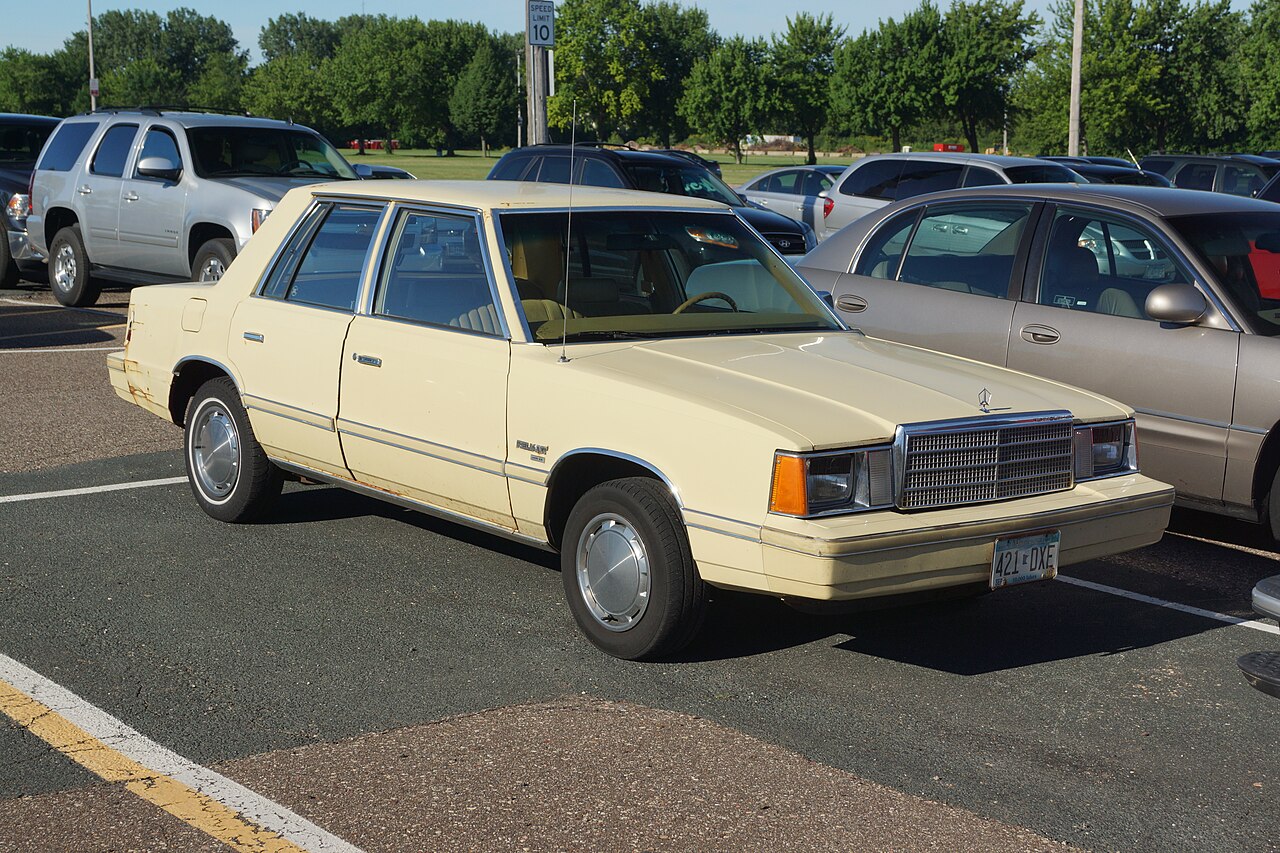 Greg Gjerdingen, CC BY 2.0, Wikimedia Commons
Greg Gjerdingen, CC BY 2.0, Wikimedia Commons
Plymouth/Dodge ‘K‑Car’ (1981)
The V4 front-wheel-drive platform replaced many metal components with plastic and was designed to economically compete with Japanese imports. And the K-cars sold very well, their platform cutting costs by sharing parts, helping Chrysler pay off its government loans early.
 Corvair Owner, CC BY-SA 2.0, Wikimedia Commons
Corvair Owner, CC BY-SA 2.0, Wikimedia Commons
Plymouth/Dodge Voyager/Caravan Minivan (1984)
Since he was now at Chrysler, Sperlich was able to revive an idea his Ford bosses had rejected: a car chassis turned into a van. Naturally he thought of the K-car platform. The minivan’s front-engine, front-wheel-drive design kept the vehicle conveniently low and cheaper to build.
 Corvair Owner, CC BY-SA 2.0, Wikimedia Commons
Corvair Owner, CC BY-SA 2.0, Wikimedia Commons
Plymouth/Dodge Voyager/Caravan Minivan (1984)
Sliding doors made it easier to get in and out of packed garages, and there was lots of seating and cargo space for groceries and sports gear. Soccer moms across America could rejoice, making the minivan not just a must-have item, but a statement of a way of life.
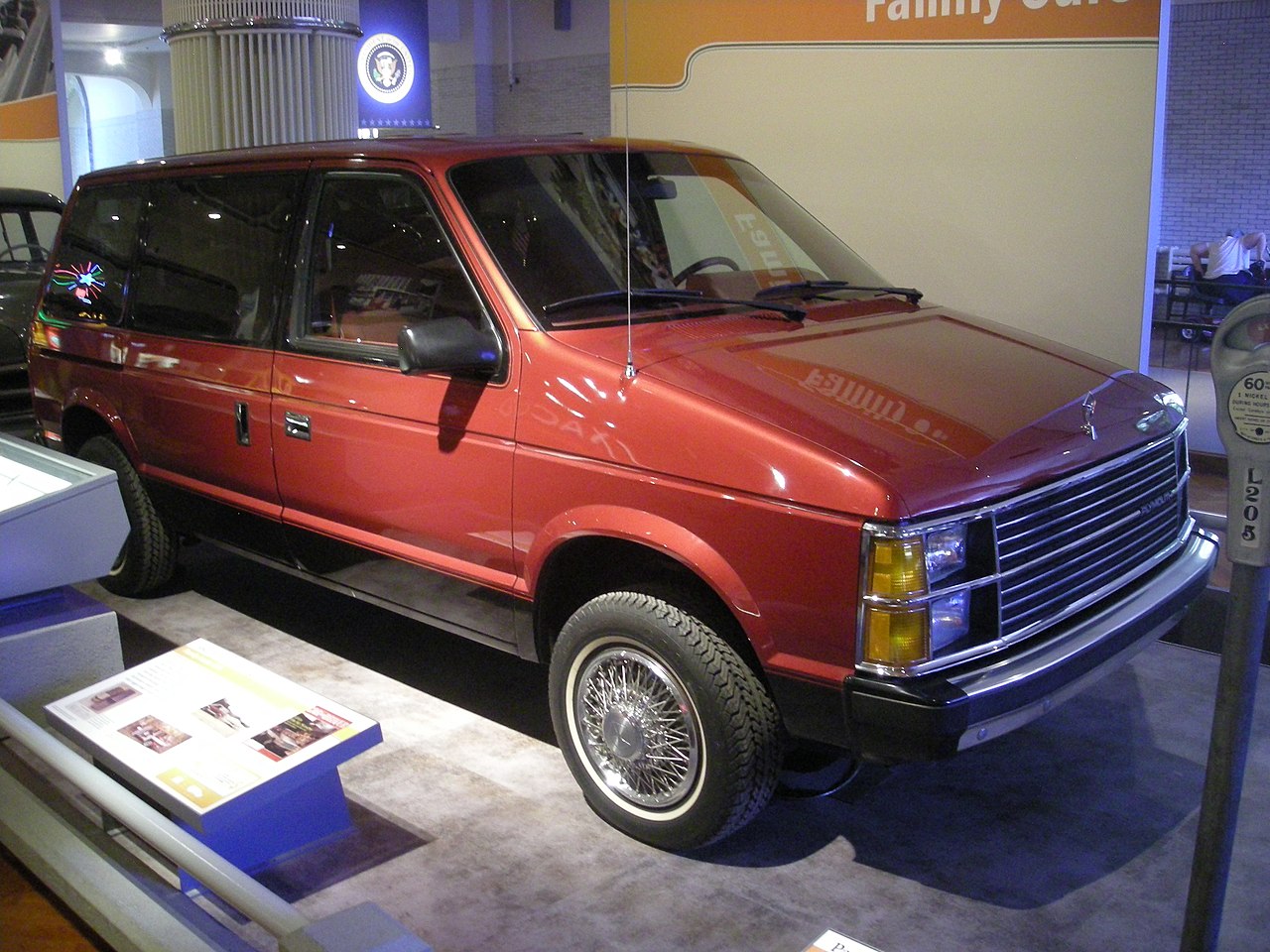 Michael Barera, CC BY-SA 4.0, Wikimedia Commons
Michael Barera, CC BY-SA 4.0, Wikimedia Commons
The Complicated Legacy Of The Model T
The Model T's innovative assembly-line production methods revolutionized manufacturing, cementing the Model T as a lasting symbol of American ingenuity. But for all its importance, there is a dark truth about the Model T: It was actually quite a terrible car. While it sold like hot cakes, the Model T was infamously complicated to drive and unreliable. Luckily, Ford from learned form their mistakes and the car still set a precedent and paved the way for the future of the automotive industry.
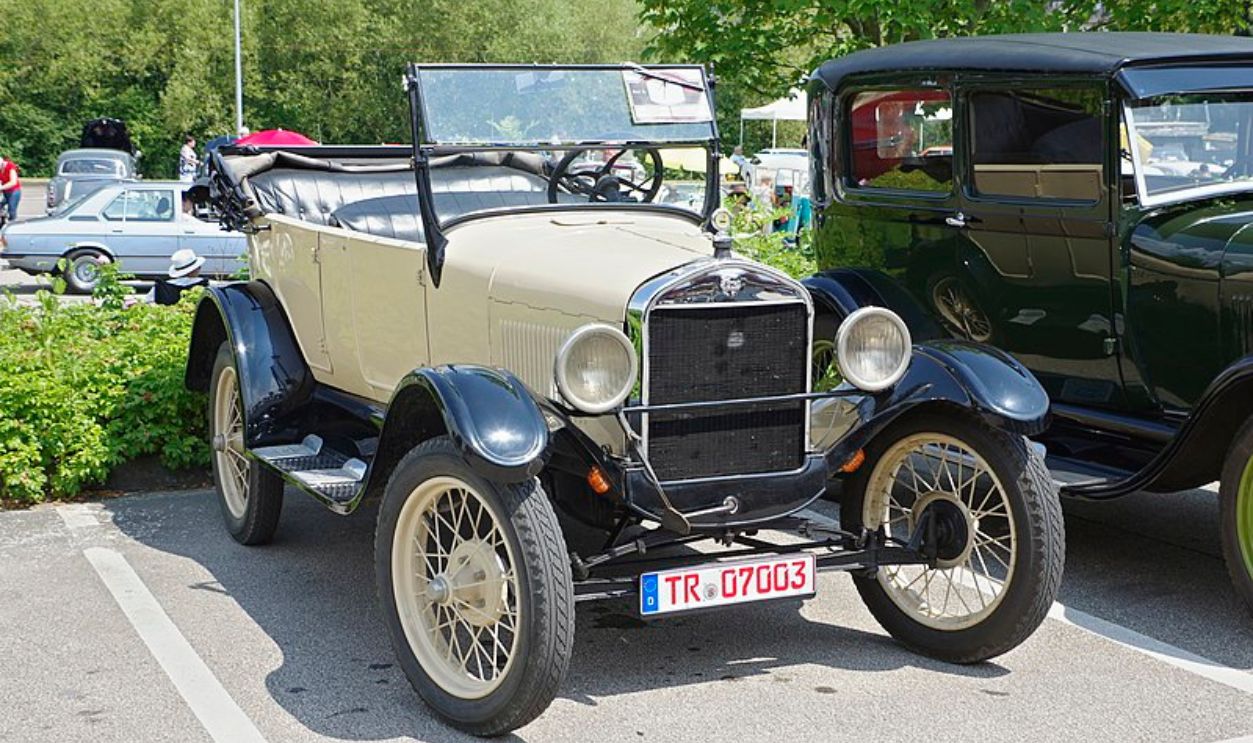 Berthold Werner, CC BY-SA 3.0, Wikimedia Commons
Berthold Werner, CC BY-SA 3.0, Wikimedia Commons
The Wheels Of Time
So that’s our survey of how cars through the decades have helped make America what it is. These cars offer a mix of the pioneering, sporty, and practical—with many triumphs and a few duds along the way. Who knows what we’ll see in the rearview mirror in years to come!
You May Also Like:
Ford's Best-Selling Models Of All Time
A Photographic History Of American Taxicabs
The Extraordinary History Of America's Greatest Endurance Race



